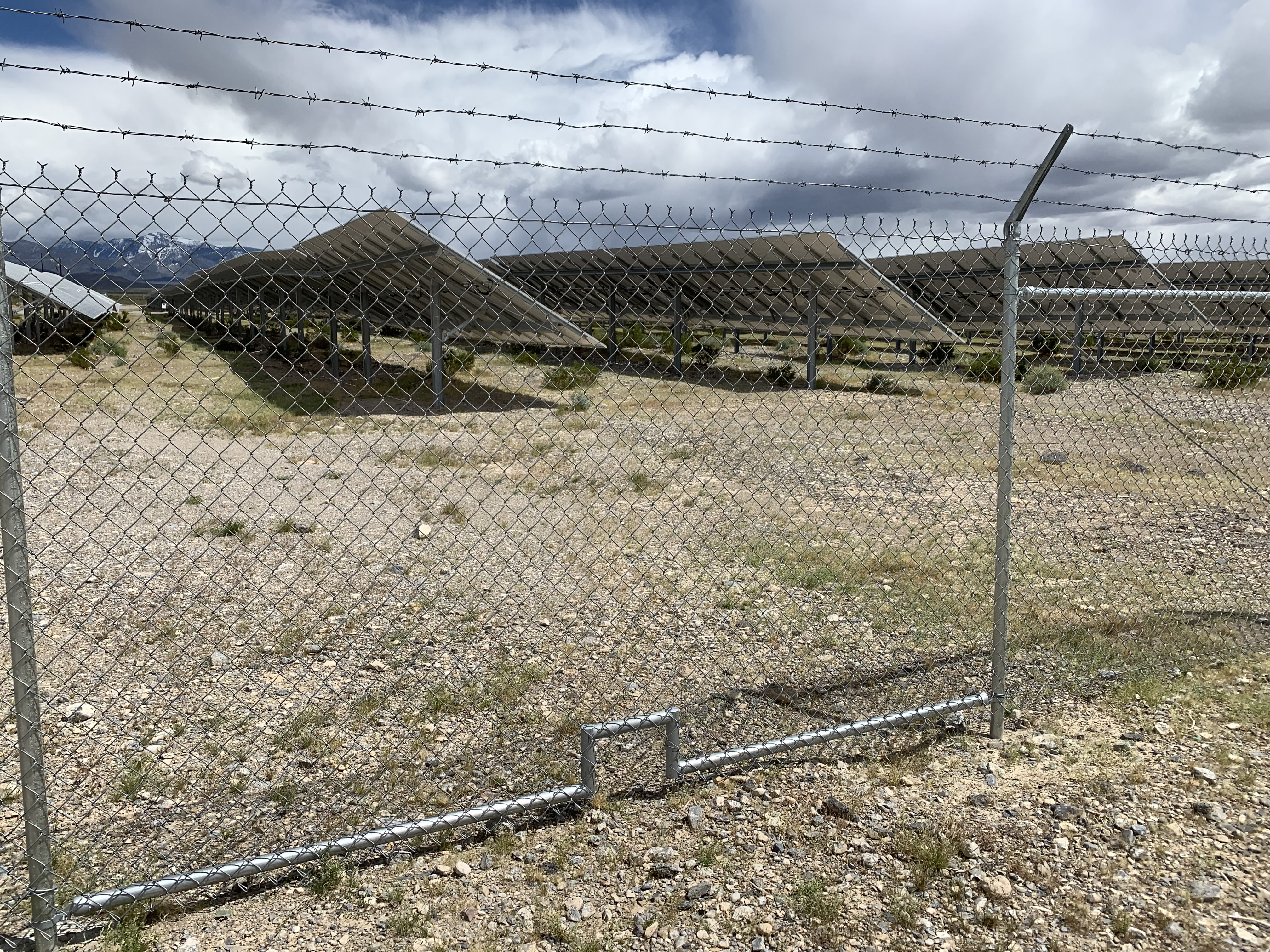Rough Hat Clark Solar Project Moves Forward
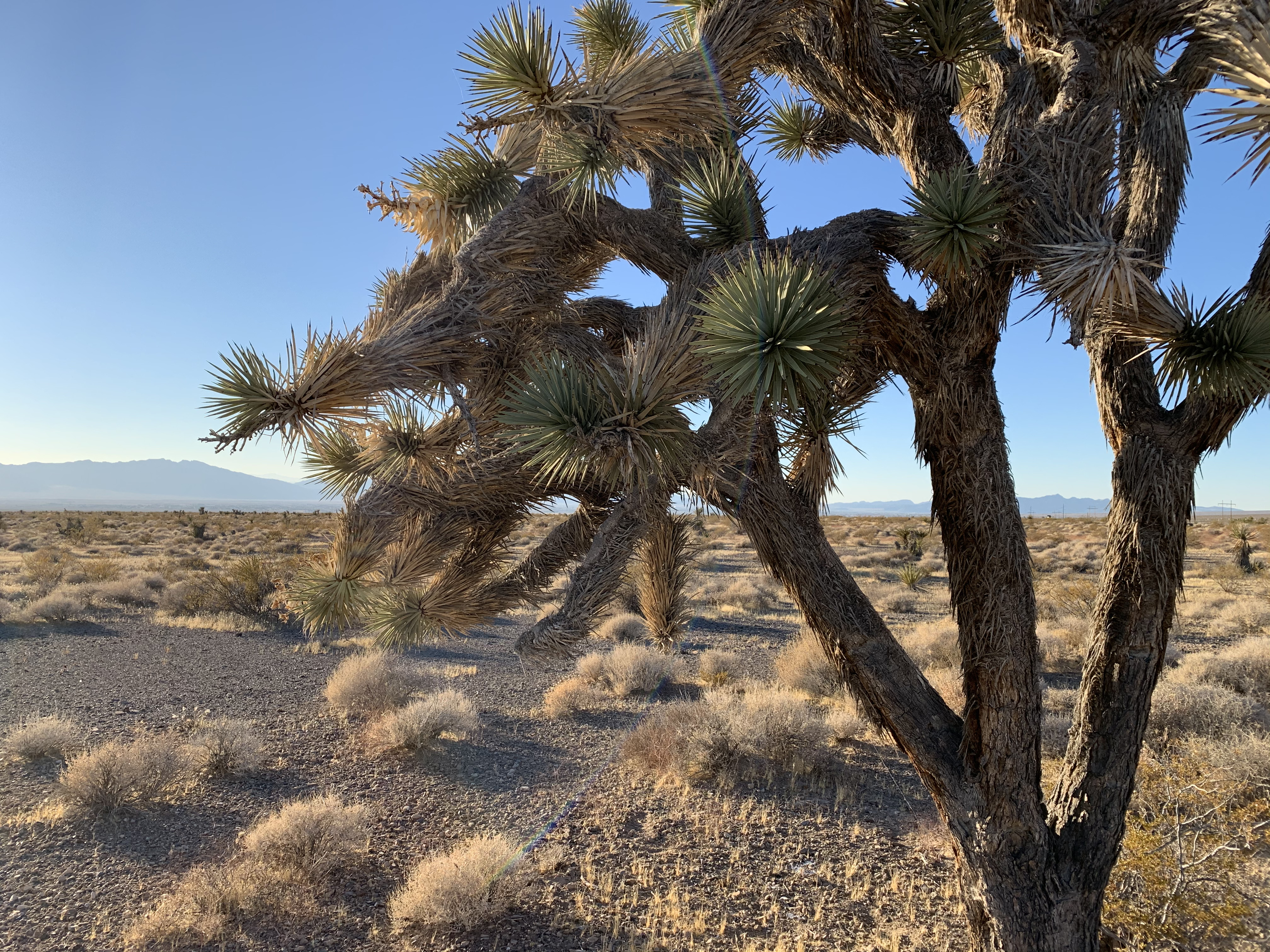
^Joshua tree on the proposed site of the Rough Hat Clark Solar Project.
June 7, 2022 - Pahrump, NV - The Bureau of Land Management (BLM) announced today that the 400-megawatt Rough Hat Clark Solar Project on 2,400 acres of public land just south of Pahrump, in Clark County, is moving forward in its application phase to an environmental review. Last winter BLM held a virtual Variance Process determination meeting, where the agency assessed whether this large-scale solar project should be allowed to be built outside of an established Solar Energy Zone. BLM determined that it could. Now BLM will prepare an Environmental Impact Statement and seek public comment.
We made several site visits to this alluvial fan, and it is high quality Mojave desert tortoise habitat and contains Joshua trees. Both can be moved out of the way of energy development. Recreational access will be cut off with 8-foot tall chainlink fences, and dust pollution will be a potential looming problem. Water will be needed to try to suppress dust during construction--where will that come from? The project is proposed for the west side of highway 160 close to the boundary of Nye County in south Pahrump Valley.
Stay tuned for more information as the scoping process begins for this utility-scale solar project by Candela Renewables, LLC--a company out of Spain. The Rough Hat name apparently comes from a local mine.
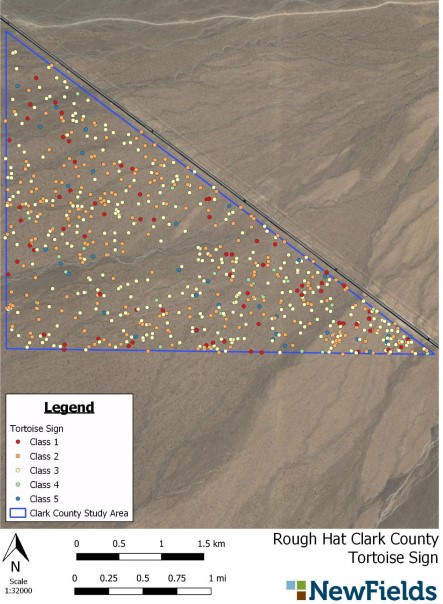
^Tortoise sign on the Rough Hat Clark proposed solar project. Class 1 includes recent and active tortoise sign. This is extremely good tortoise habitat. If this solar project is approved, it will set an extremely bad precedent for facilitating the continuing extinction vortex of a federally threatened species.
Here is the announcement: https://www.blm.gov/press-release/blm-advances-rough-hat-clark-county-solar-project-application
BLM ADVANCES ROUGH HAT CLARK COUNTY SOLAR PROJECT APPLICATION
LAS VEGAS – The BLM has completed the variance process for the Rough Hat Clark County Solar Project right-of-way application after coordination and consultation with appropriate federal, state, and local agencies and Tribes. After receiving public input, the BLM will initiate an environmental review of the project.
The Rough Hat Clark County Solar Project is a proposed 400 MW utility-scale photovoltaic solar power generation and battery storage facility on approximately 2,400 acres of BLM-managed public land located in the Pahrump Valley in Clark County, southeast of the Town of Pahrump and approximately 38 miles west of Las Vegas.
“After careful consideration, the BLM will continue processing the application and proceed with initiation of the National Environmental Policy Act process,” said Shonna Dooman, Las Vegas Field Office Manager. “Stakeholder engagement efforts by the BLM identified potential concerns and we will use this information during the environmental review for the Rough Hat Clark County Solar Project.”
The BLM hosted two virtual information forums in December 2021 to provide interested parties with a description of the application evaluation process, including the variance process, on the proposed project. The BLM provided opportunities for input from the public and federal, state, and local agencies, and initiated government to government consultation with Tribes, including conducting field trips.
The next step is to publish the Notice of Intent to Prepare an Environmental Impact Statement, which will kick off the public scoping process and comment period. Comments submitted during the initial evaluation will be further considered during the National Environmental Policy Act process for the project.
Proceeding with processing the Rough Hat Clark County Solar Project does not render project approval or otherwise entitle the applicant in any way, nor does it create any right or benefit, substantive or procedural, enforceable at law or equity by a party against the United States, its departments, agencies, instrumentalities or entities, its officers or employees, or any other person. The variance determination and supporting documentation, including the Input Summary Report, and additional information for the Rough Hat Clark County Solar Project can be found at https://eplanning.blm.gov/eplanning-ui/project/2019992/510.
The BLM manages vast stretches of public lands that have the potential to make significant contributions to the nation’s renewable energy portfolio. To promote the development of these energy sources, the BLM provides sites for environmentally sound development of renewable energy on public lands. The efficient deployment of renewable energy from our nation’s public lands is crucial in achieving the Biden-Harris administration’s goal of a carbon pollution-free power sector by 2035, as well as Congress’ direction in the Energy Act of 2020 to permit 25 gigawatts of solar, wind, and geothermal production on public lands no later than 2025.
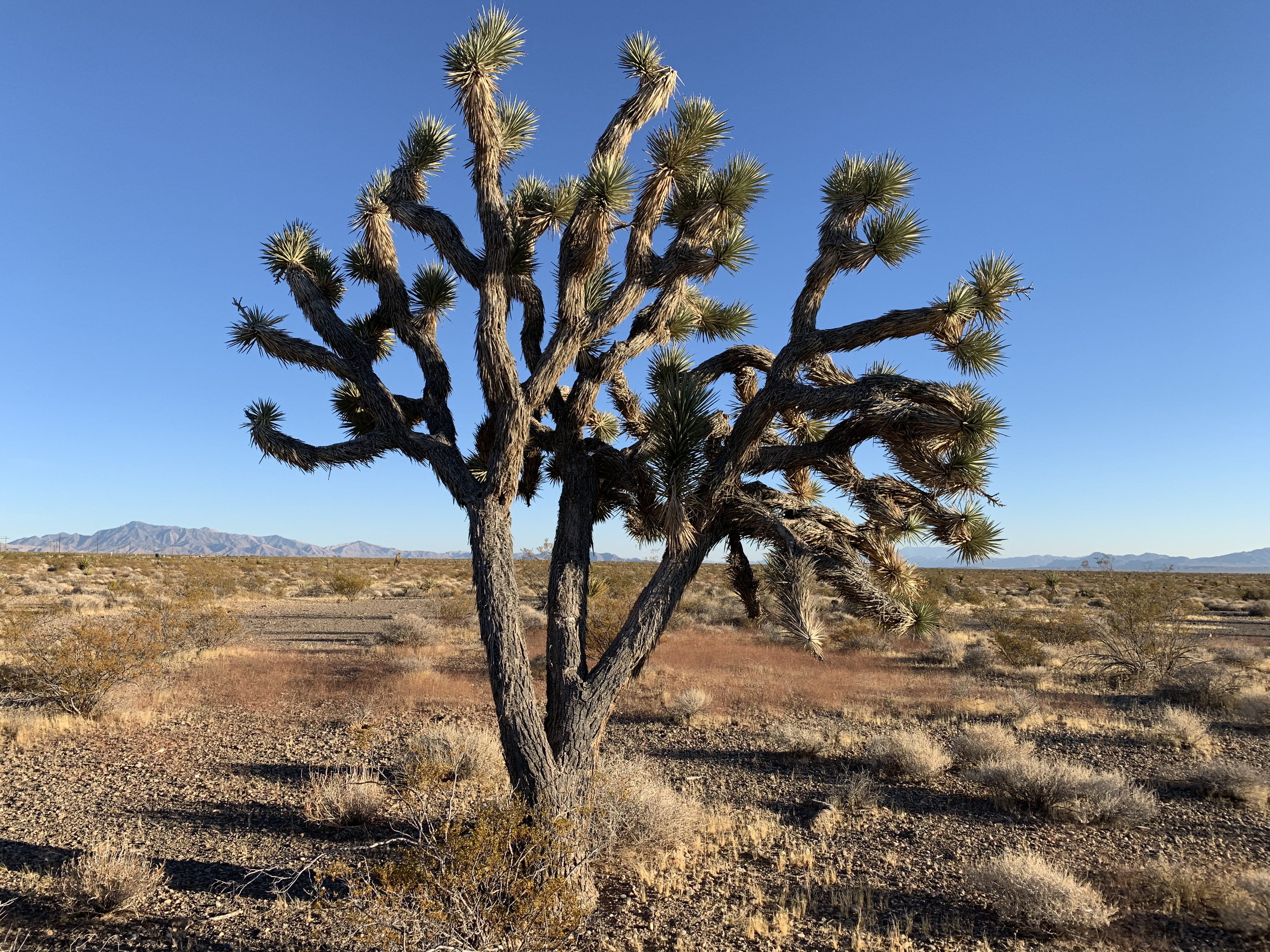
^Photos above and following of scattered Joshua trees and Mojave Desert scrub from October 2020 on our site visit to the proposed Rough Hat Clark Solar Project. This is undisturbed desert.
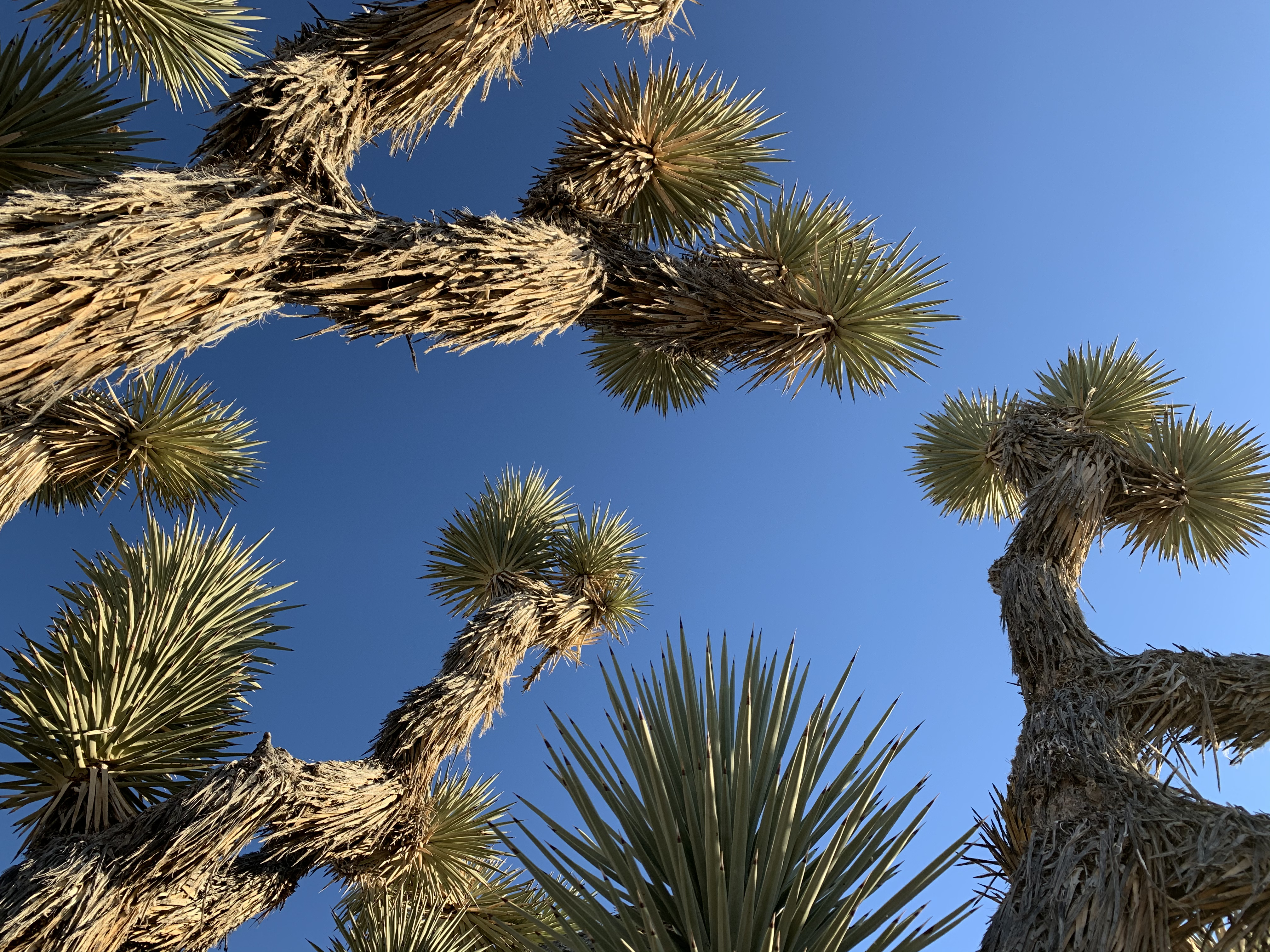
^Looking up through a Joshua tree on the project site. This tree will need to be bulldozed to make way for the solar panels.
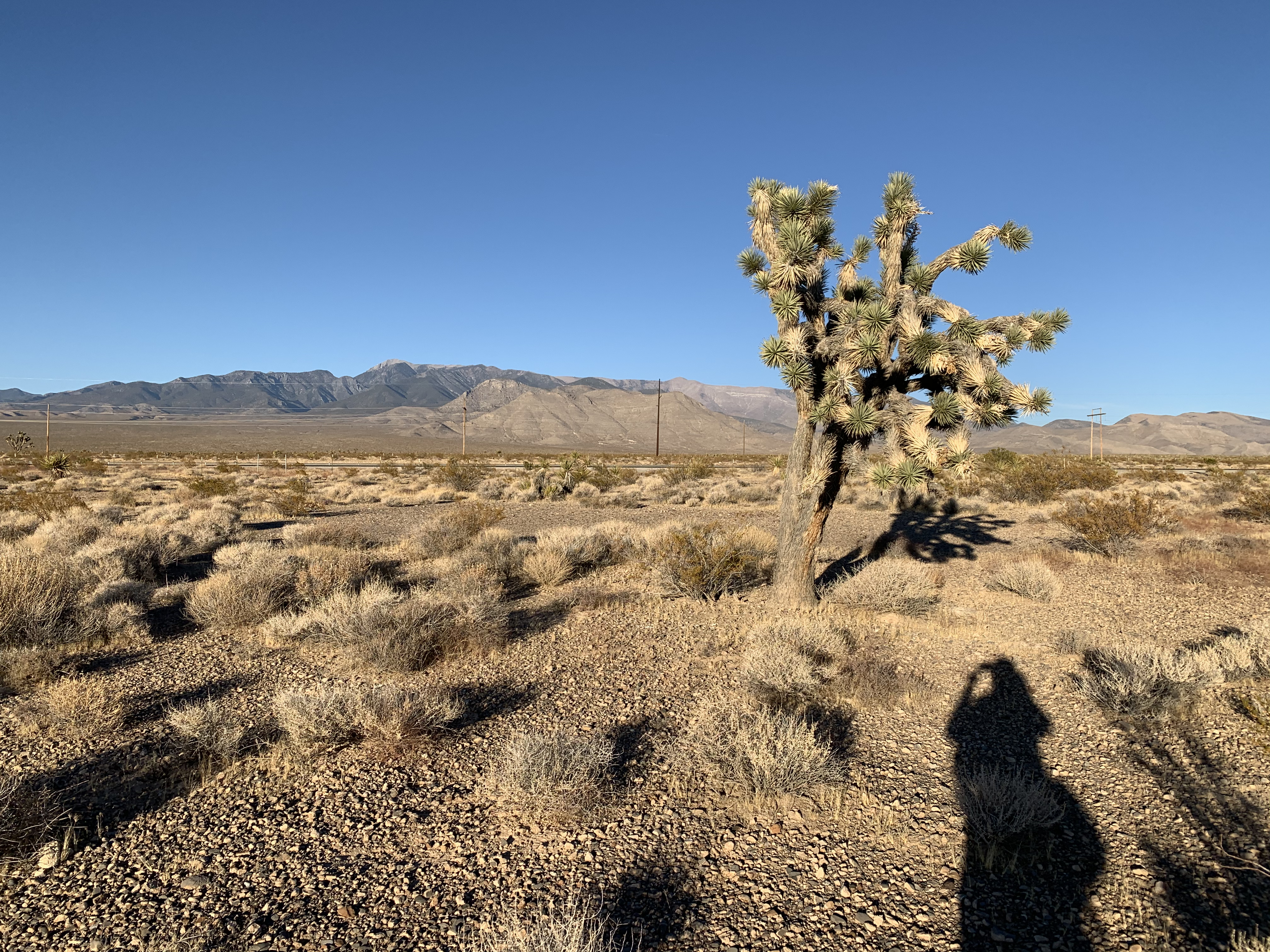
Joshua tree on the proposed Rough Hat Clark Solar Project next to highway 160, looking eastwards to the Spring Range.
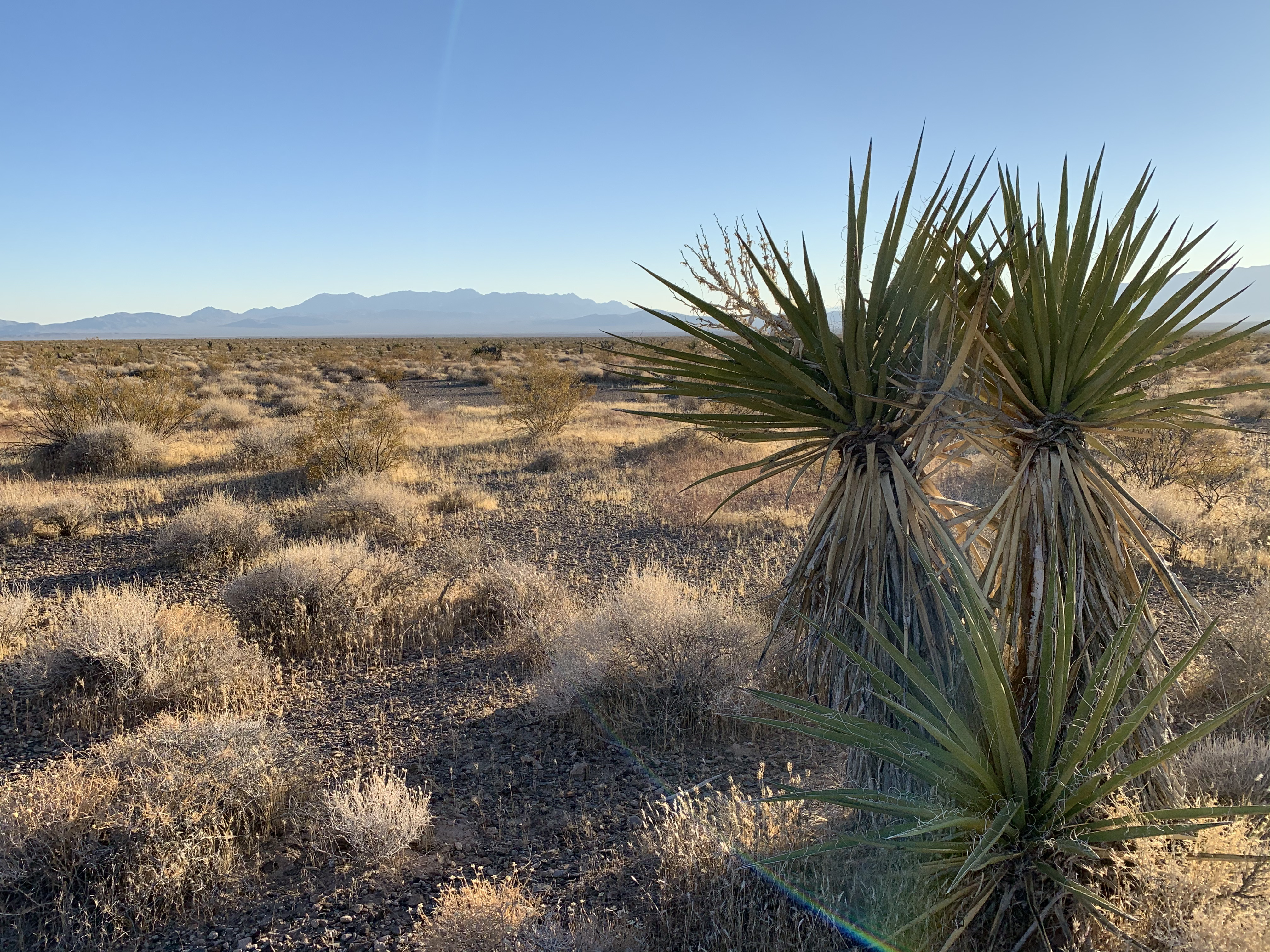
^Thousands of Mojave yuccas are in the way of the proposed Rough Hat Clark Solar Project. Site visit October 2020.
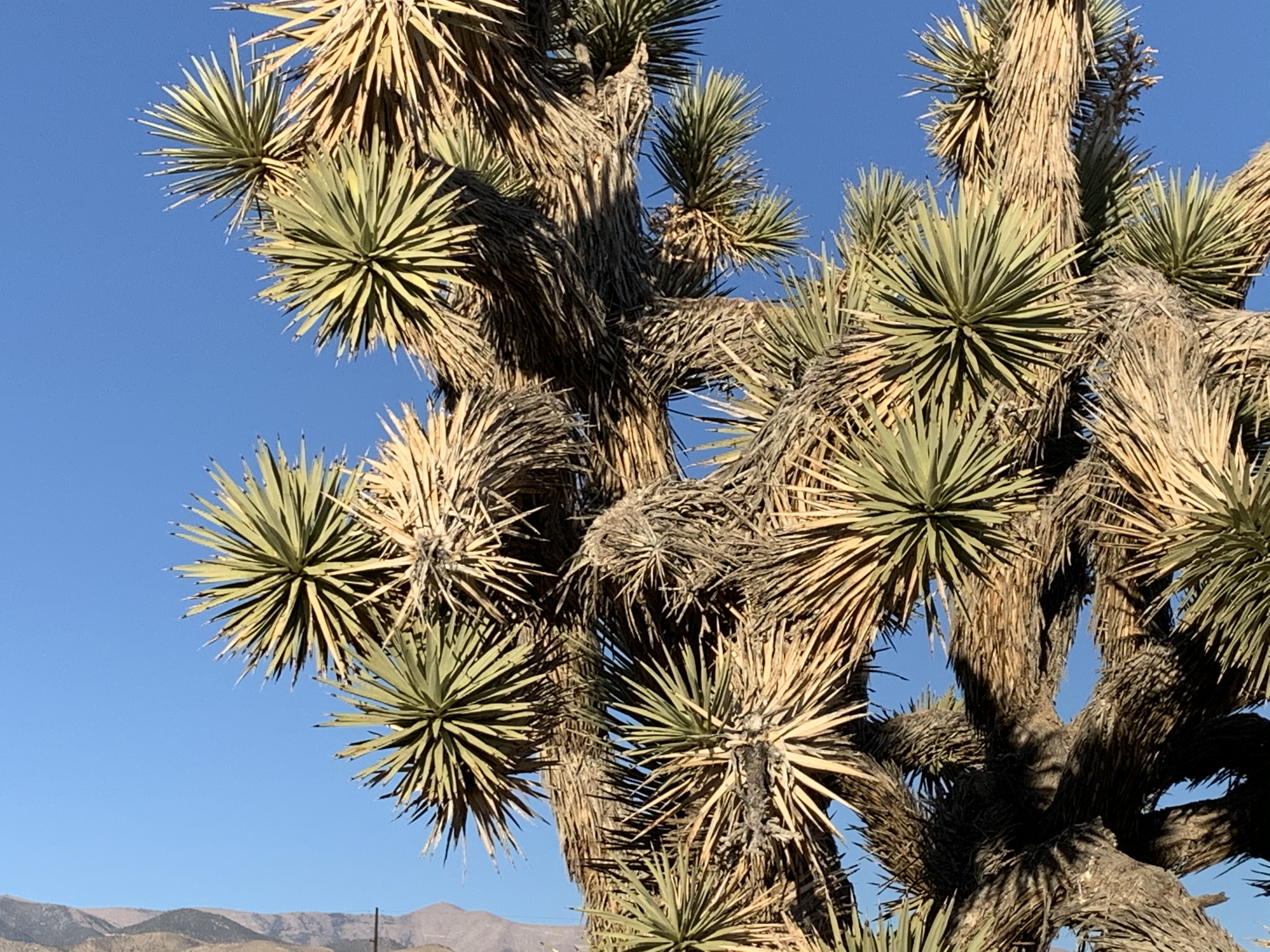
^Another Joshua tree in the way of the solar project.
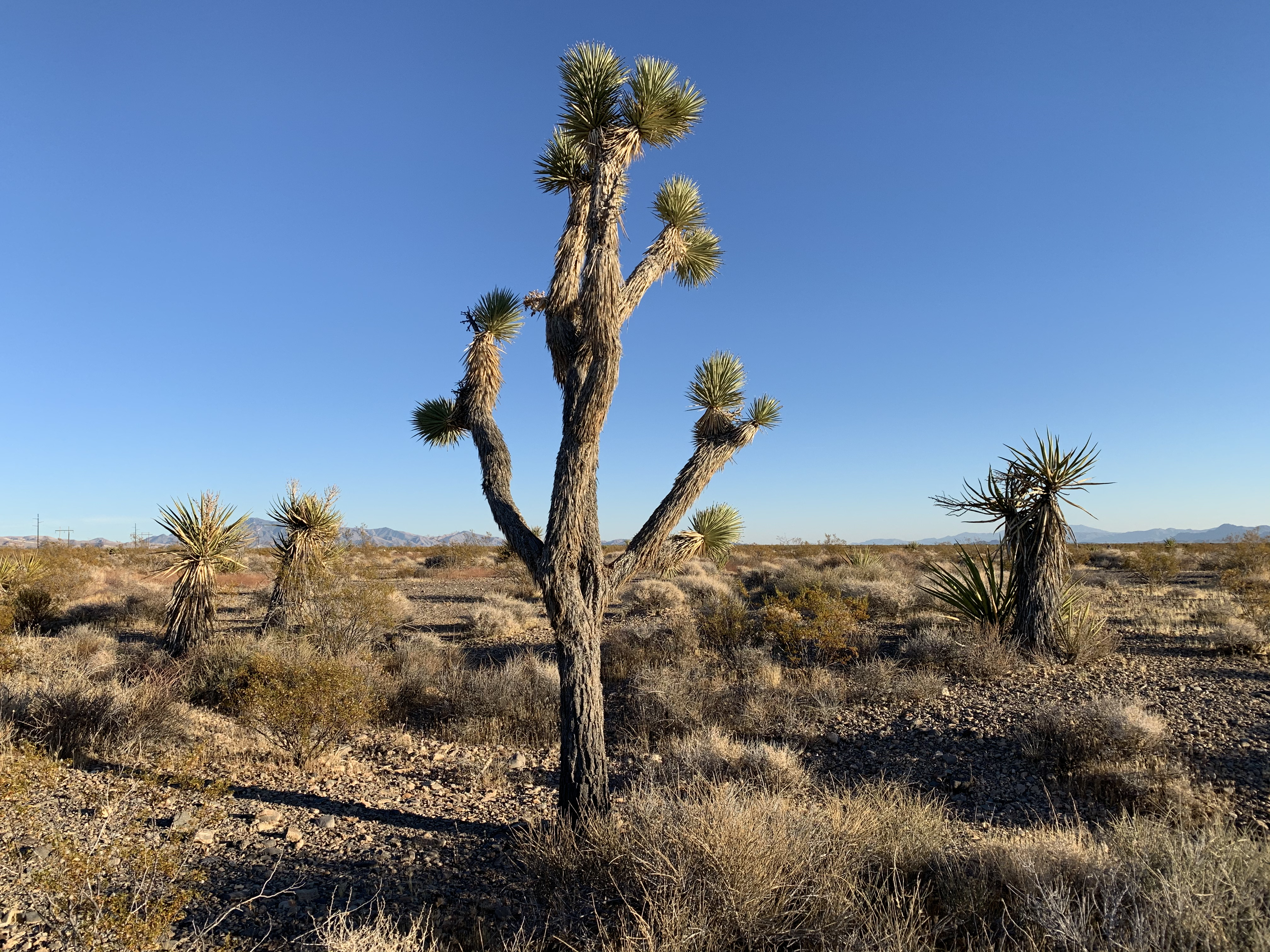
^Joshua trees and Mojave yuccas on the proposed Rough Hat Clark Solar Project.
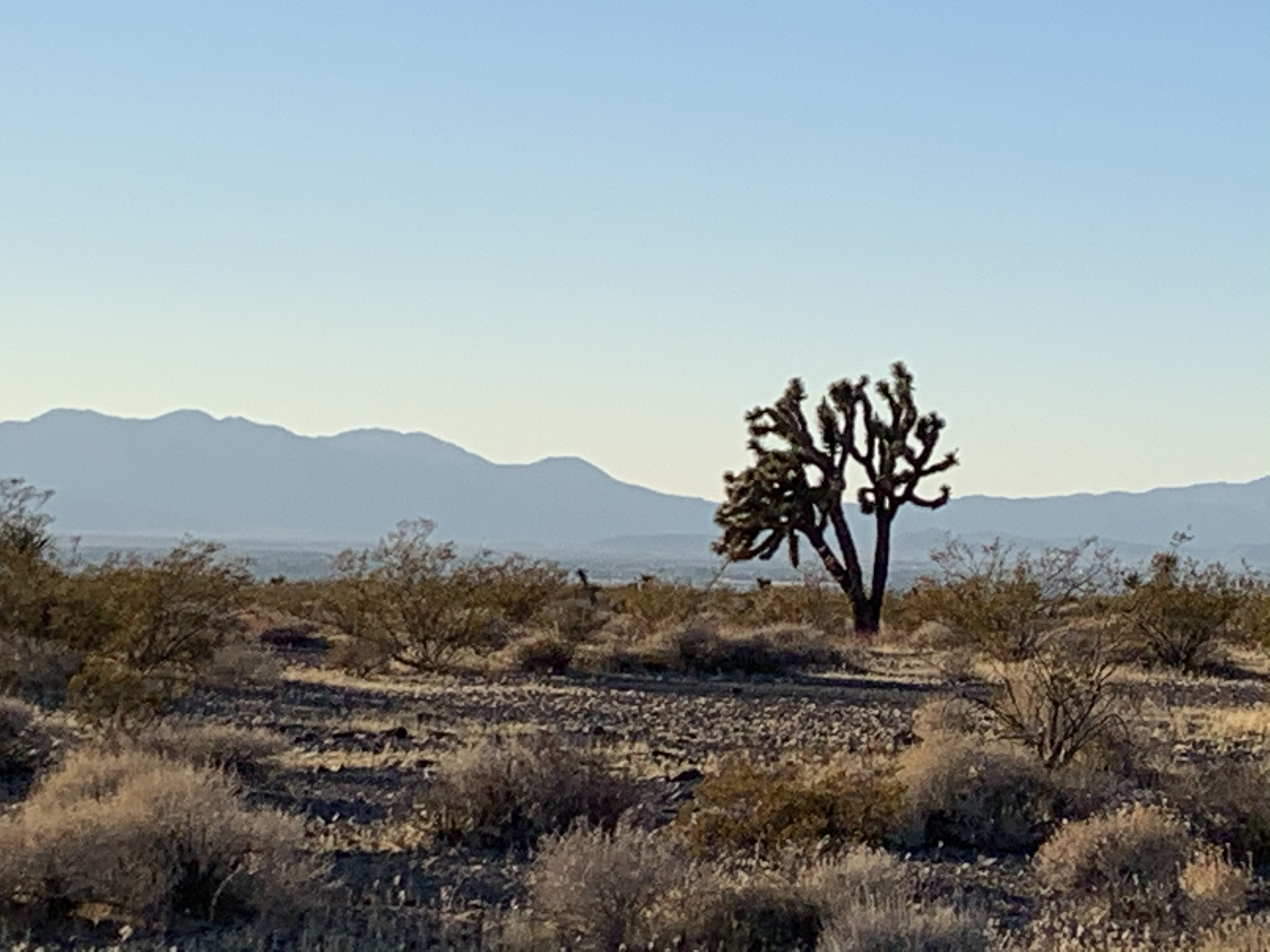
^Joshua tree on the alluvial fan south of Pahrump, looking westwards to the Nopah Range. This habitat is proposed to be removed to make way for utility-scale solar development.
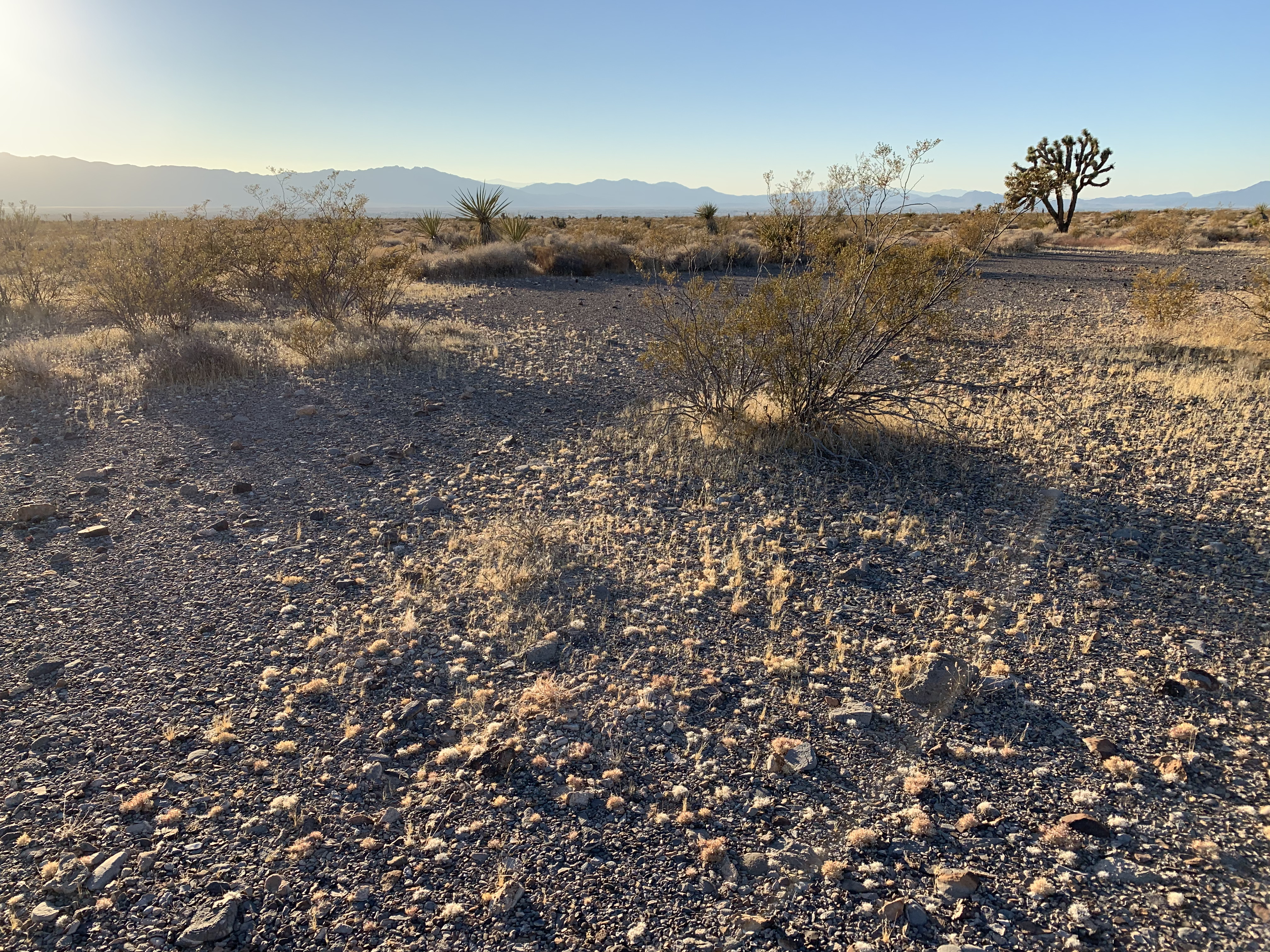
^Fall 2020, after a good spring wildflower bloom, and creosote bushes have flowered and seeded. Scattered Johau trees and Mojave yuccas dot this Mojave Desert landscape. But solar developers seek to ruin this area for energy sprawl that would better go on the thousands of acres rooftops and over parking lots.
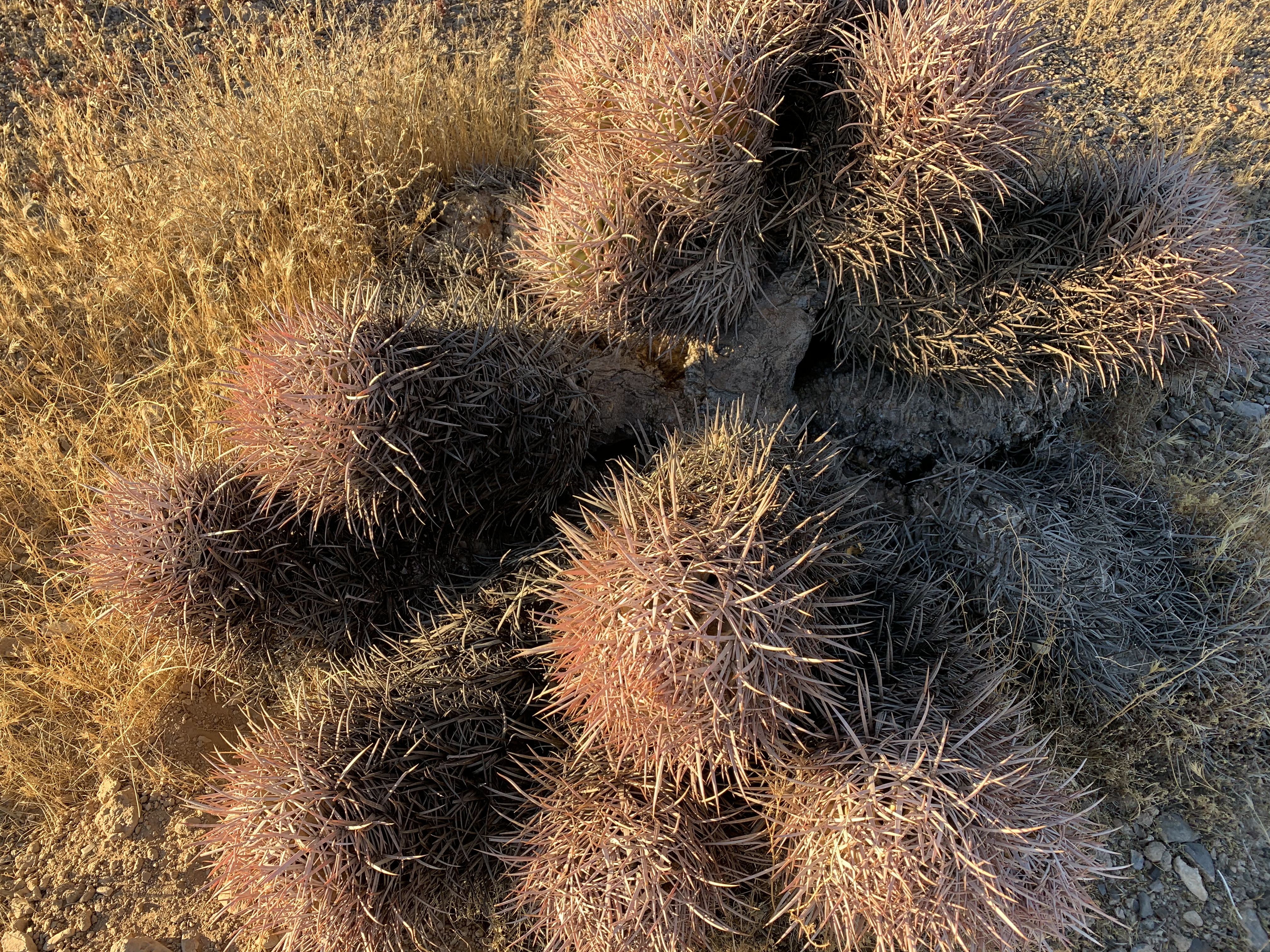
^Cottontop cactus on the prposed site of the Rough Hat Clark Solar Project.
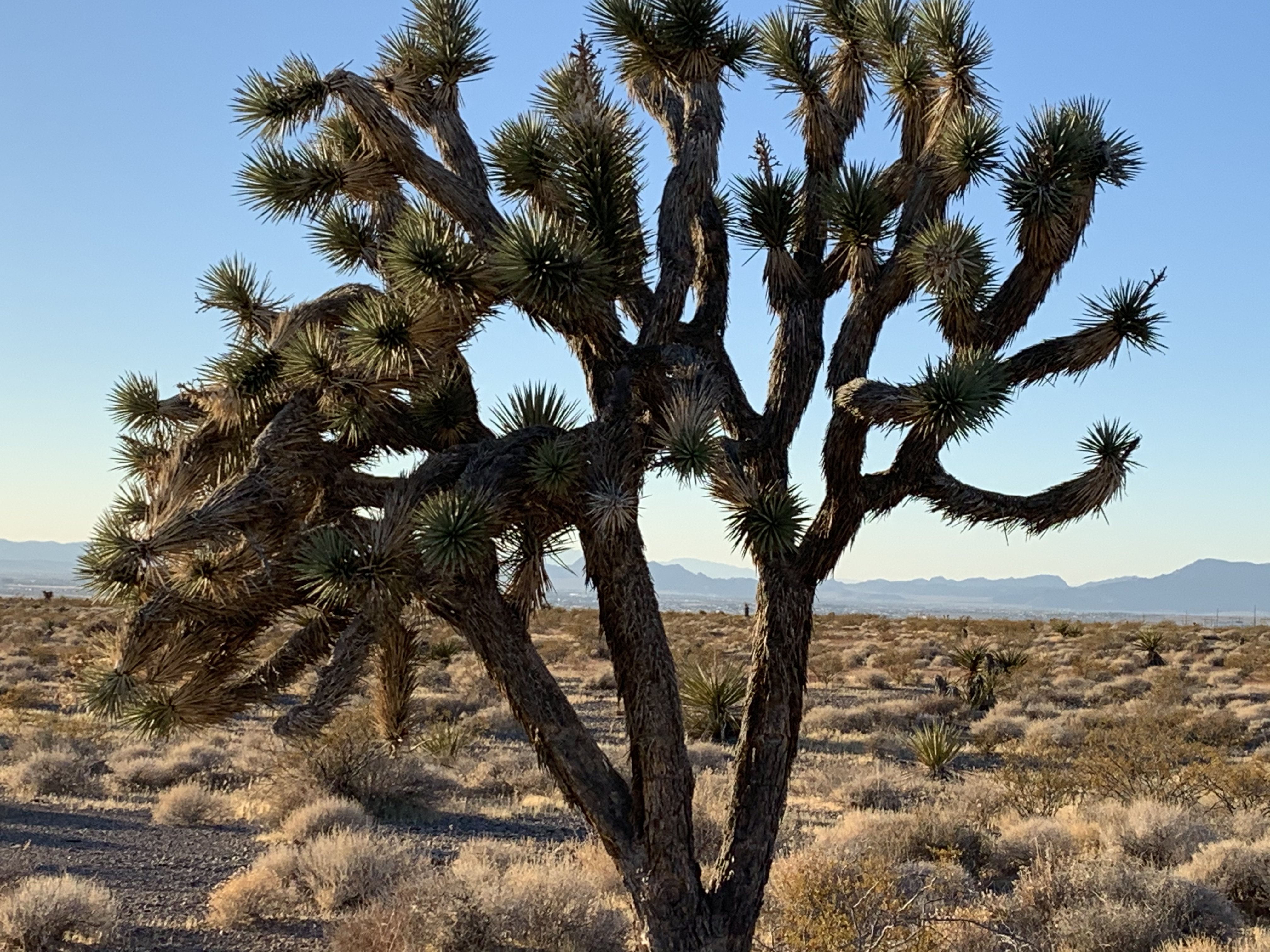
^Joshua tree on the Mojave Desert habitat proposed for solar energy development, south Pahrump Valley, Nevada.
County Commission Votes to Oppose Rough Hat Nye Solar Project!
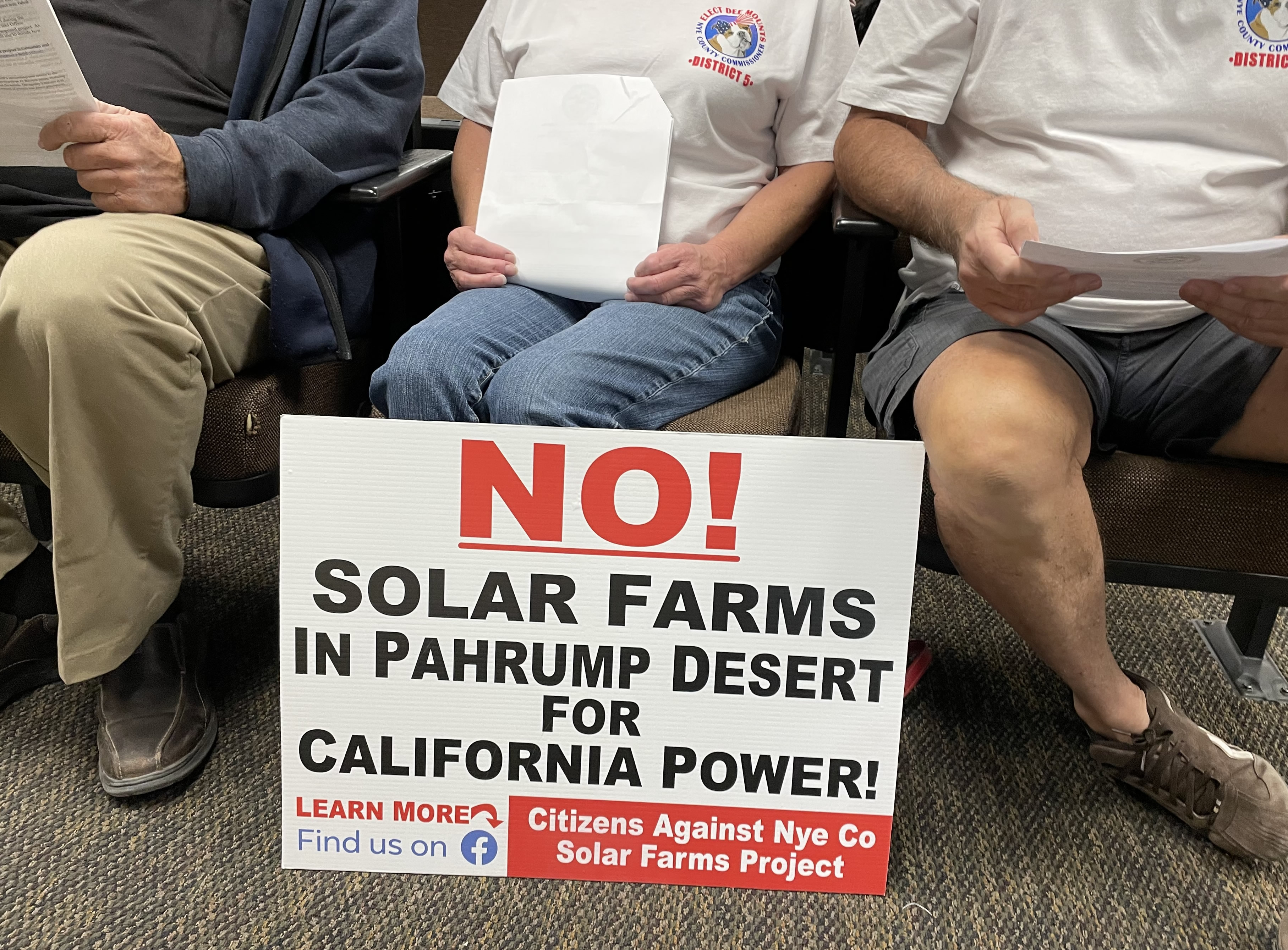
^Signs were apparent at PLAN and County Commission meetings in Pahrump, Nevada. We confirmed that Rough Hat Nye Solar Project would connect with the existing GridLliance transmission project built and sold by Valley Electric Co-op, that sends electrical generation into the California Independent System Operator territory.
December 22, 2021 - Pahrump NV - In a decisive vistory for local residents facing an industrial solar project in their backyard, Nye County Commissioners voted 5-0 to oppose the controversial Rough Hat Nye Solar Project, which is proposed on public lands on the southern edge of Pahrump. The decision comes afrer weeks of public meetings and presentations by the developer Candela Renewables from Spain to the Public Lands Advisory Committee (PLAN), which heard arguments and passionate pleas from local residents. The Committee eventually made its recommendation to the full County Commission.
Good coverage in the Pahrump Valley Times: https://pvtimes.com/news/nye-county-votes-to-oppose-rough-hat-solar-project-107447/?fbclid=IwAR3GqOk8JSHr0NLba6PDyVpfQ4Bc3S8A18QsoPJqEUlDNZA5yDrWlyO08u8
Basin and Range Watch has attended the meetings held by PLAN, made public comments opposing this project, and participated by Zoom to this County Commission meeting. We live in Nye County, our office is in Nye County, and we regularly visit Pahrump and the surrounding beautiful desert--so this is a priority for us.
Although a setback for the proposed utility-scale solar project, Linda Bullen, attorney for many solar project developers including Candela, said they would be moving forward. She said this is very early in the application process.
The Rough Hat Nye Solar Project will still need to undergo environmental review with the Bureau of Land Management (BLM) in order to obtain a Right-of-Way to develop on these public lands. This will involve the development of an Environmental Impact Statement under the National Environmental Policy Act (NEPA), with more opportunities for public comment.
But local public outcry is important, as the County decision not to issue a Special Use Permit can help sway the federal government (BLM) to not moving this solar application forward.
We are writing up our notes from the last PLAN meeting, which gives a good picture of how local opposition influenced the County. Stay tuned.
Environmental Groups Pushed For Pahrump Valley Solar Energy Zone
^December Moonrise in south Pahrump Valley with Mojave yucca.
December 22, 2021 - Pahrump, NV - An official Solar Energy Zone was never designated by the Bureau of Land Management (BLM), yet several environmental organizations pushed for a virtual solar energy zone in south Pahrump Valley, citing "low conflict." We know they were wrong. The public was never given a chance to comment on this "Designated Leasing Area" for solar energy.
This letter from January 2020 is from four large environmental organizations to BLM. Natural Resources Defense Council, Nature Conservancy, Defenders of Wildlife, and the Wilderness Society request that the area located south of Pahrump be sacrificed for solar energy.
We think you should know who is advocating to sacrifice the South Pahrump Valley. They are admitting there is high habitat value but want the solar there because it is next to the people living in Pahrump. In our view, working against local people like this is the worst kind of environmental activism.
Our organization, Basin and Range Watch has opposed every solar project proposed for this area and will continue to do so. We care about the habitat AND the people in the area! See the January 2020 letter, and excerpt below:
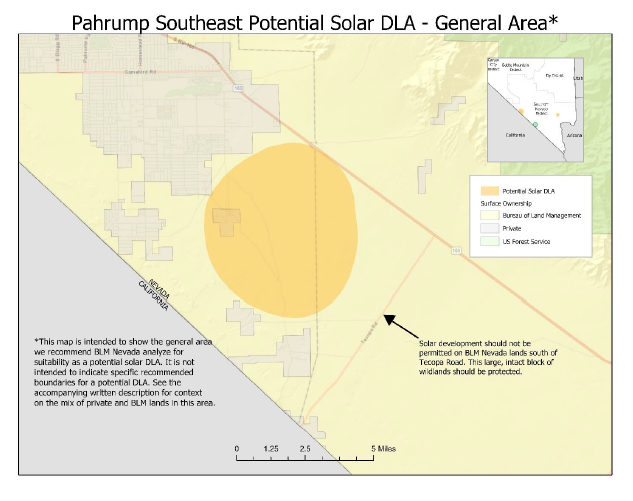
Environmental group proposition to the government agencies: Pahrump Southeast potential solar Designated Leasing Area (DLA)
The area on the southeast edge of Pahrump and north of the Tecopa Road has the potential for a DLA. These lands have lower habitat and ecological values in large part because of the proximity to development in Pahrump, Nevada State Route 160 (Hwy 160), and land where BLM is currently evaluating a proposed solar project through an Environmental Impact Statement. The map below shows the general area in the region that could be appropriate for a new DLA. The Pahrump Southeast potential DLA is in the Pahrump Valley in the area southwest of Hwy 160, northwest of Tecopa Road, and southeast of Pahrump. The vegetation is generally classified as Mojave Desert creosote-bursage with significant components of Joshua tree and Mojave yucca. At the lower elevations of the Pahrump Southeast potential DLA, there are saltbush communities and small stands of mesquite. There is high-quality desert tortoise habitat and connectivity in the creosote-bursage vegetation-type. However, various conditions make this area seem less important to the long-term viability of the population, as the habitat is likely degraded since proximity to the town of Pahrump increases tortoise predators such as ravens and coyotes. The potential connectivity value of the area is hampered by proposed development to the south, the town of Pahrump to the north, topography to the west, and Hwy 160 to the east. 9 A new DLA in this area would provide the opportunity to co-locate future solar development on BLM Nevada lands in the area southwest of Hwy 160, northwest of Tecopa Road, and southeast of Pahrump. This would greatly reduce impacts as compared to allowing scattershot development in multiple areas across the region. The presence of existing transmission lines that could be upgraded increases the potential for the area to support additional solar development. Regardless of whether BLM identifies a new DLA in the Pahrump Southeast area, BLM should not allow any solar or other infrastructure development southeast of Tecopa Road, also known as the Stump Springs area. This large block of intact wildlands and wildlife habitat should be protected. Appropriate development of utility-scale solar in the Pahrump Southeast area will require addressing and mitigating impacts to the desert tortoise, along with any other unavoidable impacts that are identified, and warrant compensatory mitigation, as described in Section III (e) (iii) of this letter. Desert tortoise currently in the potential DLA will require translocation should development occur; nearby Stump Springs is a viable translocation area and provides high-quality habitat and population connectivity with other desert tortoise populations.
Mining Claims Segregated to Streamline Rough Hat Solar Project
October 19, 2021 - Pahrump, NV - The Bureau of Land Management (BLM) is segregating any further mining claims on 7,000 acres covering both Rough Hat Solar applications. This time, they are taking no public comment. The notice can be viewed here: https://www.federalregister.gov/documents/2021/10/20/2021-22786/notice-of-segregation-of-public-land-for-the-rough-hat-nye-county-solar-project-nye-county-nevada
This means that the BLM is advancing their approval of these applications. Here are the 3 Priority Worksheets for Rough Hat Nye, Rough Hat Clark, and Copper Rays Solar.
To be clear, the BLM placed all 3 of these applications on a High Priority Status over one year ago. They worked with the solar companies, put this up for a public appeal, but never consulted the town of Pahrump or Nye County.s
If you look at these documents, the BLM states that the status can be recategorized basekd on new information.
Also if you scroll down the documents, they have categories called "Local Considerations".
In particular, they are saying these projects will benefit the economy of Nye County. We think that is wrong. The projects will cut off access to the desert and trails, probably drive property tax payers to move away, lower property values and create health issues for people on the southern side of Pahrump.
It is troubling that the BLM worked so closely with the solar developers for 2 years. The priority reviews are not made public but are in the public domain.
Proposed Rough Hat Solar Project Would Take Up Huge Amount of Desert On Southern Edge of Pahrump
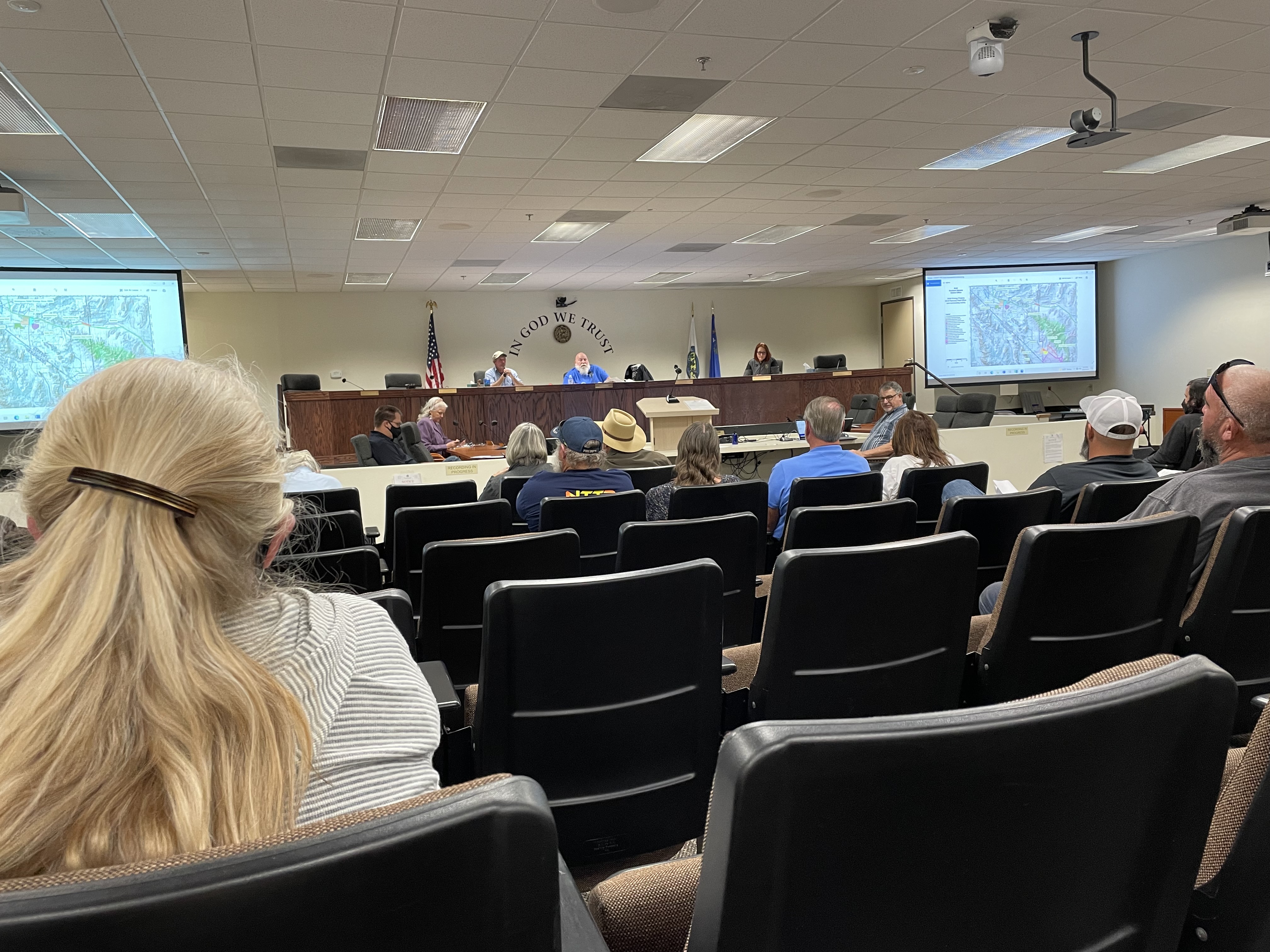
^October 12 Pahrump Public Lands Advisory Committee meeting.
October 18, 2021 - Pahrump, NV - On October 12 we attended the Pahrump Public Lands Advisory Committee meeting at 5 p.m., Oct. 12 at the Nye County commissioners’ chambers in Pahrump, to listen and comment on the proposed 500-megawatt Rough Hat Solar Nye Project on 3,400 acres next to the south end of town. See the Nevada Public Utilities Commission filing here: http://pucweb1.state.nv.us/PUC2/DktDetail.aspx. The committee was discussing and bringing up recommendations for the solar projects proposed for southern Nye County: 6 projects in total (see maps below). That equals 18,000 acres of public lands.
The public was incensed, and no person supported this in their public comments. Access to the desert on the south edge of town was a huge issue, with recreational OHV, hiking, walking, exploration, and horse riding mentioned as important to why people moved to Pahrump. The beauty of the desert landscape was brought up.
Do we want to address this as a body? the committee asked. There would apparently be no way through the "road block" solar projects for off-highway vehicles and horsemen. The Trout Canyon Translocation Area to the south of the Tecopa Road--the area where hundreds of federally threatened Mojave desert tortoises would be moved to from the solar developments before construction--also raised questions concerning future access of those areas. The solar developer said this had not been finslaized yet, but an option to move tortoises to the Stump Springs Area of Critical Environmental Concern was under consideration. The committee admitted there were a lot of loose ends about the solar projects, public lands access, and visual resource management.
The solar developers were present, from Candela Renewables out of San Francisco, a subsidiary of a multinational Spanish natural gas company. They were scheduled to give a presentation to the committee that evening.
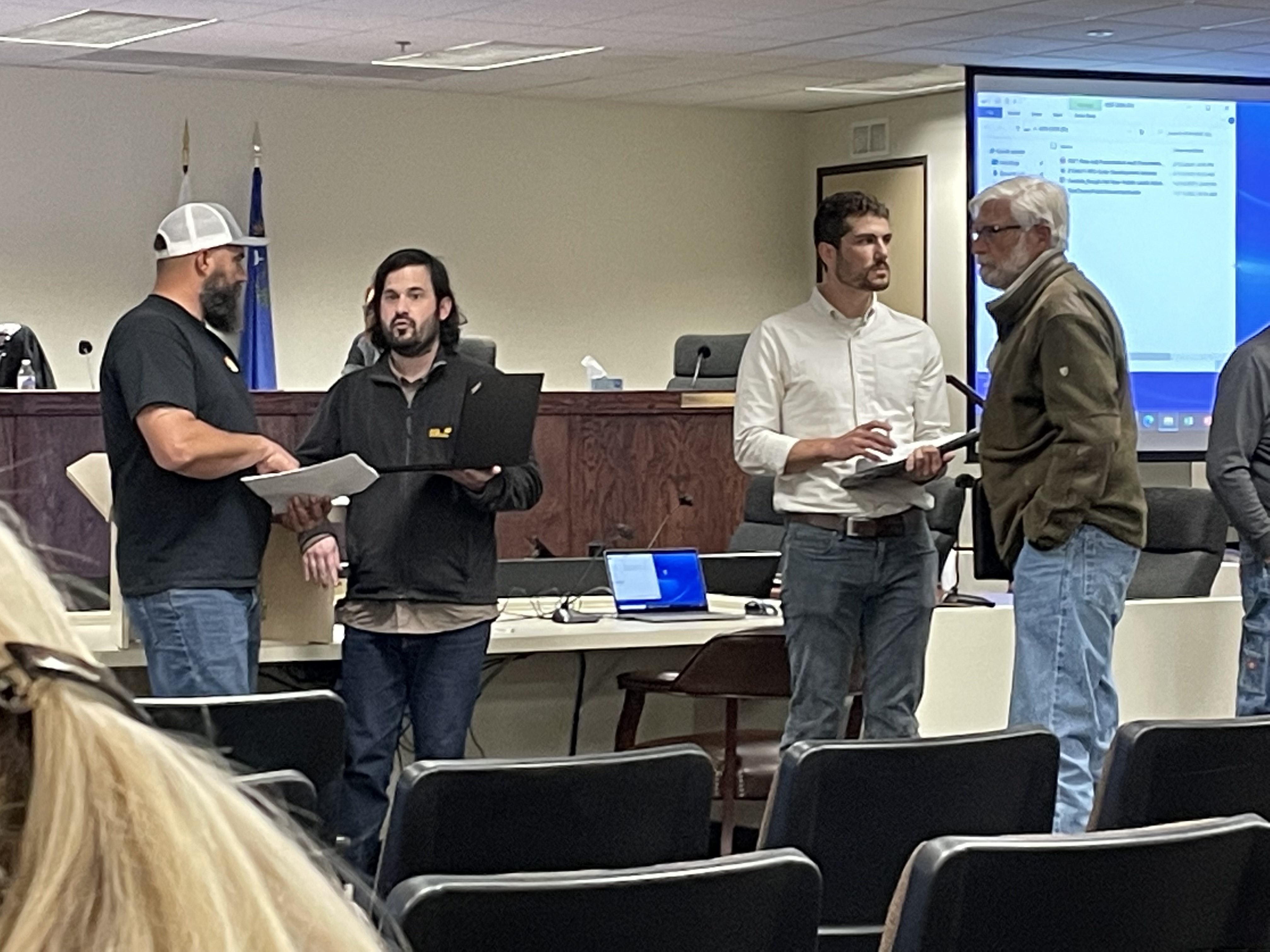
^On the left a concerned resident on the south end of Pahrump talks with one of the three Candela solar developers at the meeting.
But the public demanded to be able to see this presentation as well. The committee discussed how it was troubling that most of the power might go to California--and that right over the border in California, those public lands were treated differently, being protected by Wilderness designation or as Areas of Critical Environmental Concern.
The committee therefore moved to continue this agenda item to the next meeting, in order to learn more about the parameters on the size and locations of the solar projects. Who wants to get involved? The committee would ask interested citizens to help with this planning, in a future board of citizens.
Industrial Solar Energy Plant Too Close to School and Residences
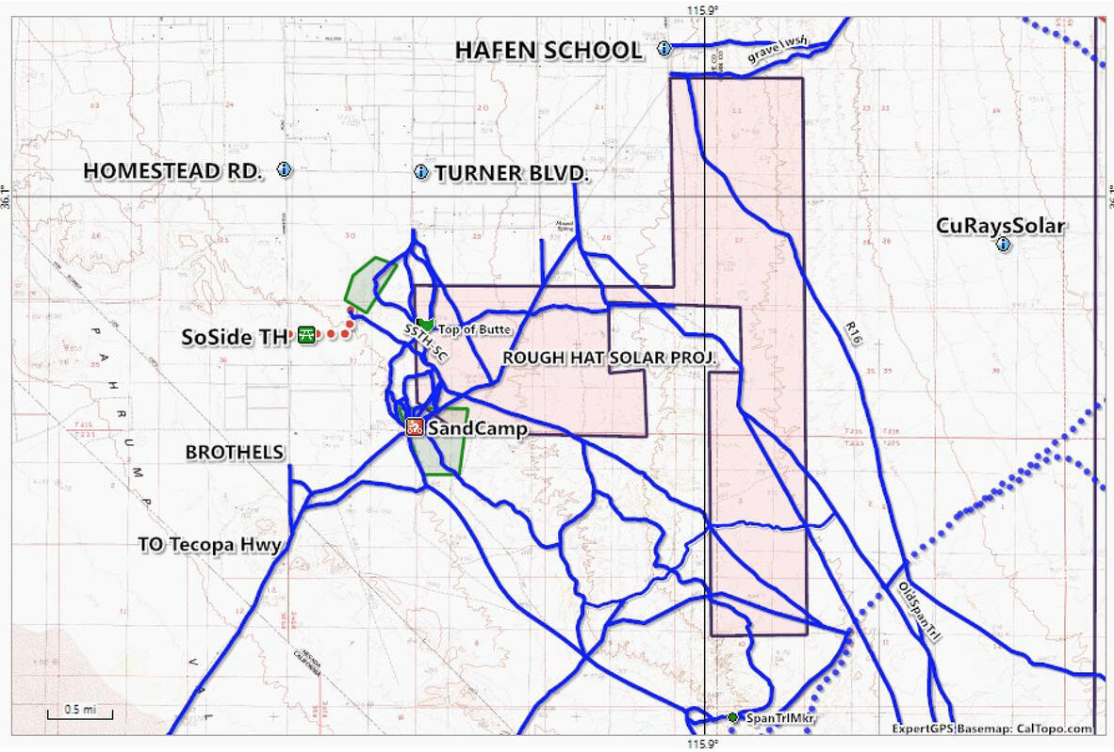
^Map from the Pahrump Valley Times of the proposed Rough Hat Solar Nye Project showing roads, recreational routes, and the Old Spanish Trail. https://pvtimes.com/news/rough-hat-solar-field-subject-of-next-pahrump-public-lands-committee-meeting-105495/attachment/special-to-the-pahrump-valley-times-this-map-shows-the-proposed-location-for-the-rough-hat-nye/
Approximately 20 residents made comments, all with concerns about the Rough Hat Solar Project, or commented that they opposed the project. Cutting off roads and OHV access was a large concern voiced by many people. Traffic on Manse Road, noise, and how the project would be an eyesore were brought up.
That such a large project would take up the desert, wreck the beautiful landscapes here, and halt recreation south of town were mentioned. Some people thought Joshua trees were protected.
People from Artesia said they were "massively" opposed to a solar project along their southern neighborhood boundary. It was "unthinkable." One resident said it was too close to her backyard. She said it takes centuries to replace the delicate desert. "It breaks my heart."
Residents noted that the projected map at the meeting had no street names.
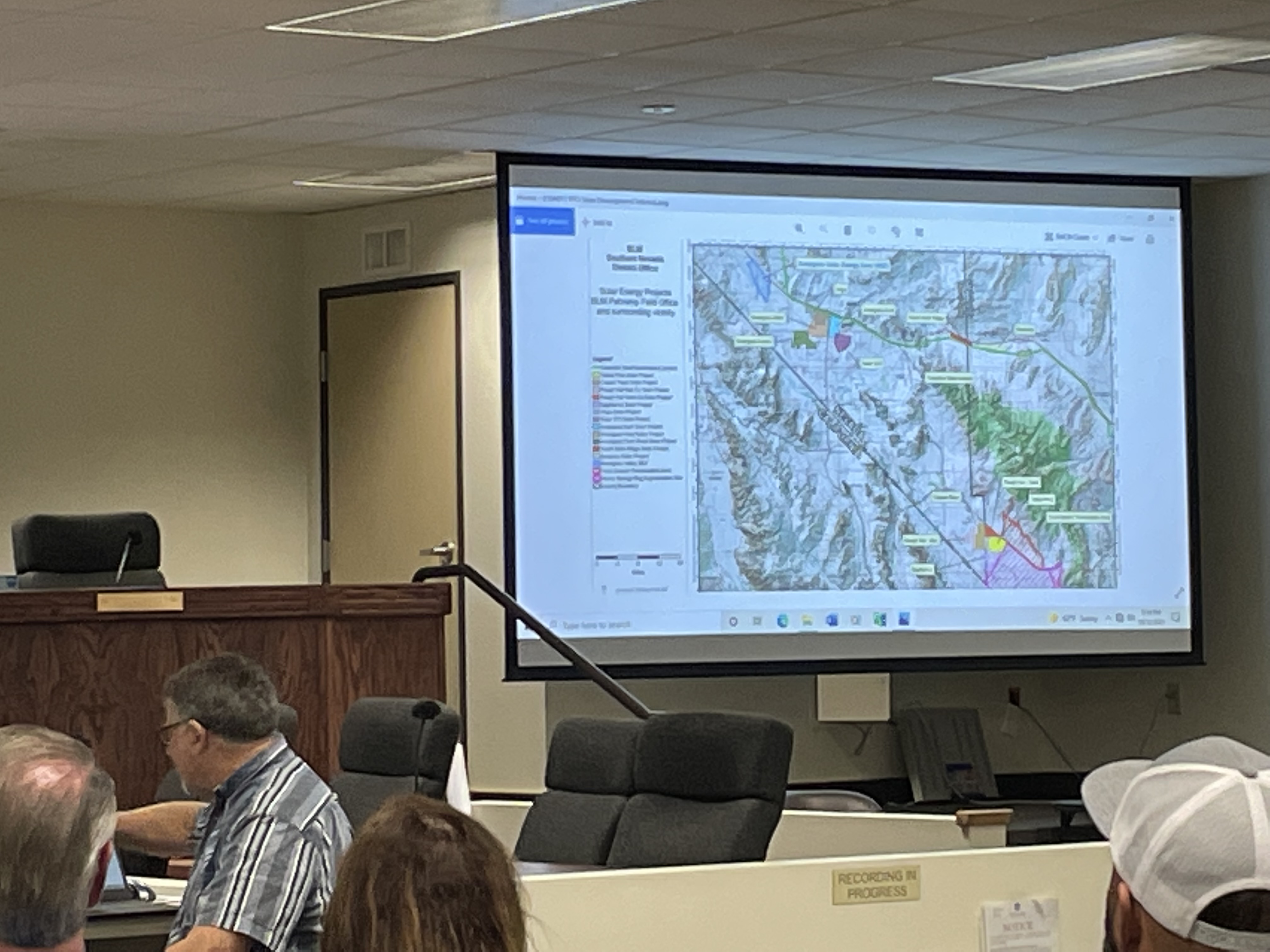
^A PowerPoint image of shapefiles of many proposed large-scale solar projects south of Pahrump and in Amargosa Valley was shown at the meeting. We asked for the link to this map but still have not recieved it.
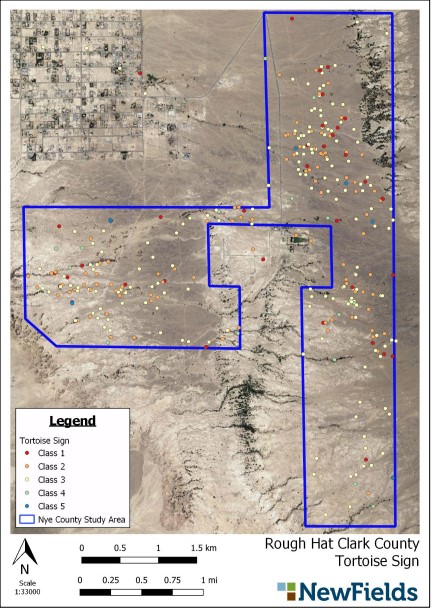
^Desert tortoise sign found on the Rough Hat Nye proposed project site (the label is in error).

^Tortoise sign on the adjacent Rough Hat Clark proposed solar project.
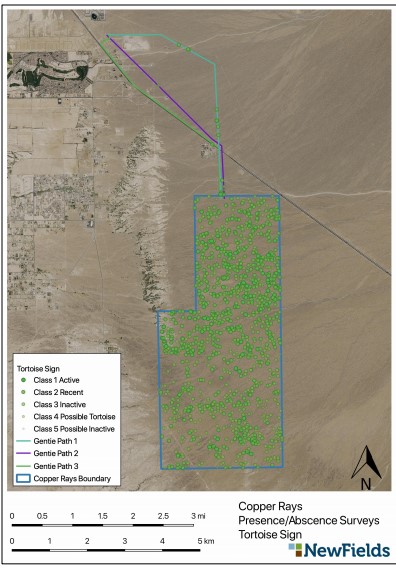
^Tortoise sign on the proposed Copper Rays Solar Project south of Pahrump, NV.
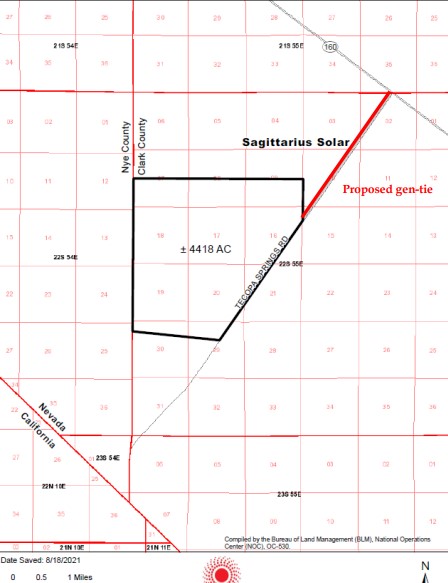
^The proposed Sagittarius Solar Project next to the approved Yellow Pine Solar Project, in south Pahrump Valley, Nevada, along Tecopa Road.
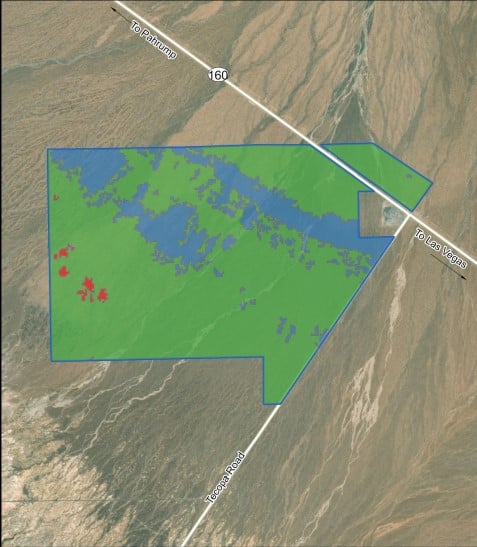
^Approved Yellow Pine Solar Project now under construction.
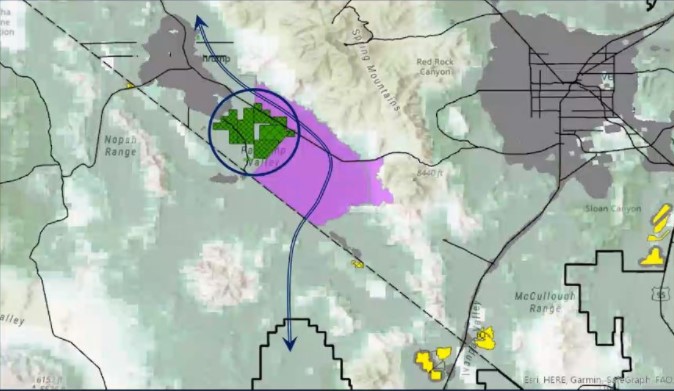
^Regional map showing Pahrump, Las vegas, and the massive build-out of utility-scale solar projects in green, circled in blue. The pink area is the tortoise translocation area, with a blue arrow showing hypothetical tortoise connectivity through Pahrump Valley.
Recreational Access Will Be Blocked
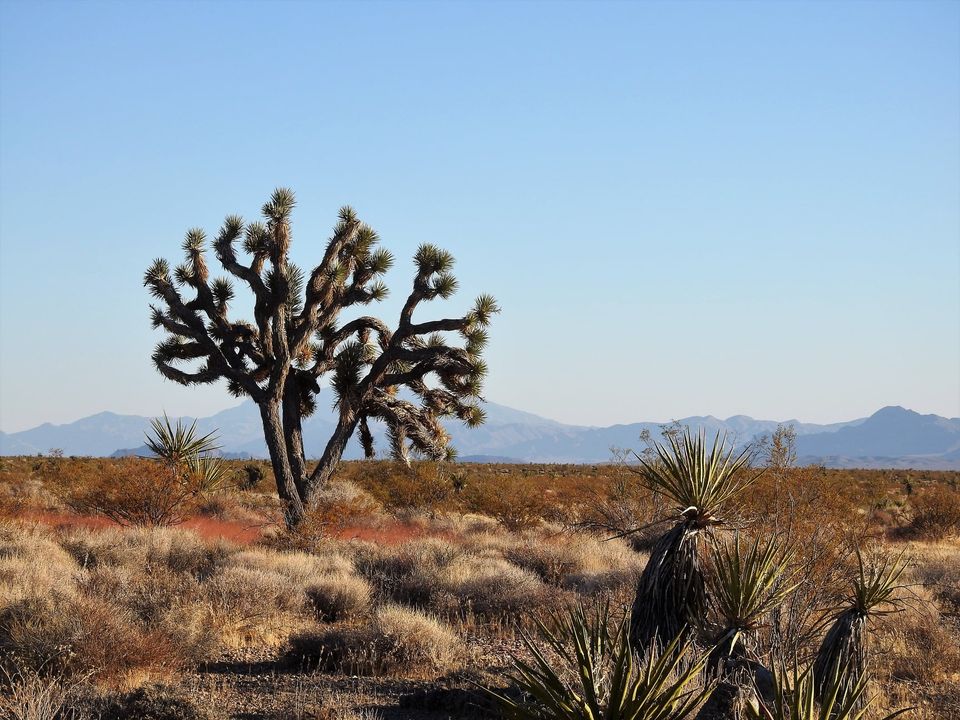
^The beautiful desert of South Pahrump Valley is under threat by multiple large-scale solar projects.
Access to the desert just south of Pahrump was a big concern at the meeting. Despite blocking access to the desert with 8-foot high chainlink fences topped with barbed wire, recreational access would be allowed, the developer claimed, by working with OHV groups.
Jim Woodruff, one of the Rough Hat solar developers present, said, "We understand there will be a change to the community." He had previously worked with the company First Solar to build sich utility-scale solar projects such as Silver State near Primm, Nevada. They had worked with Southern Nevada Off Road Enthusiasts to allow race route access. They would allow access to the sand dunes south of pahrump. But there would be speed limits on trail access areas through the solar development area.
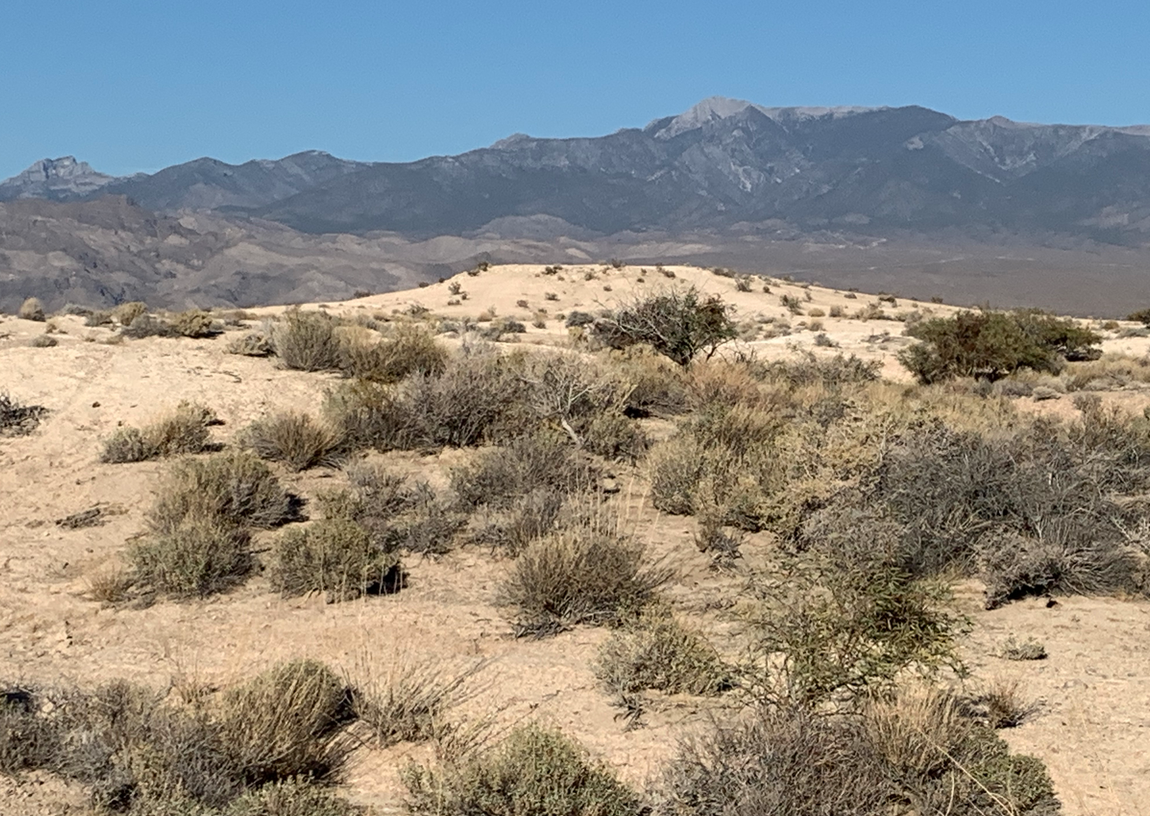
^The Butte, an old thermal spring mound, just south of Pahrump, on the proposed Rough Hat Solar Project site.
The solar company was open to 100-foot setbacks next to houses.
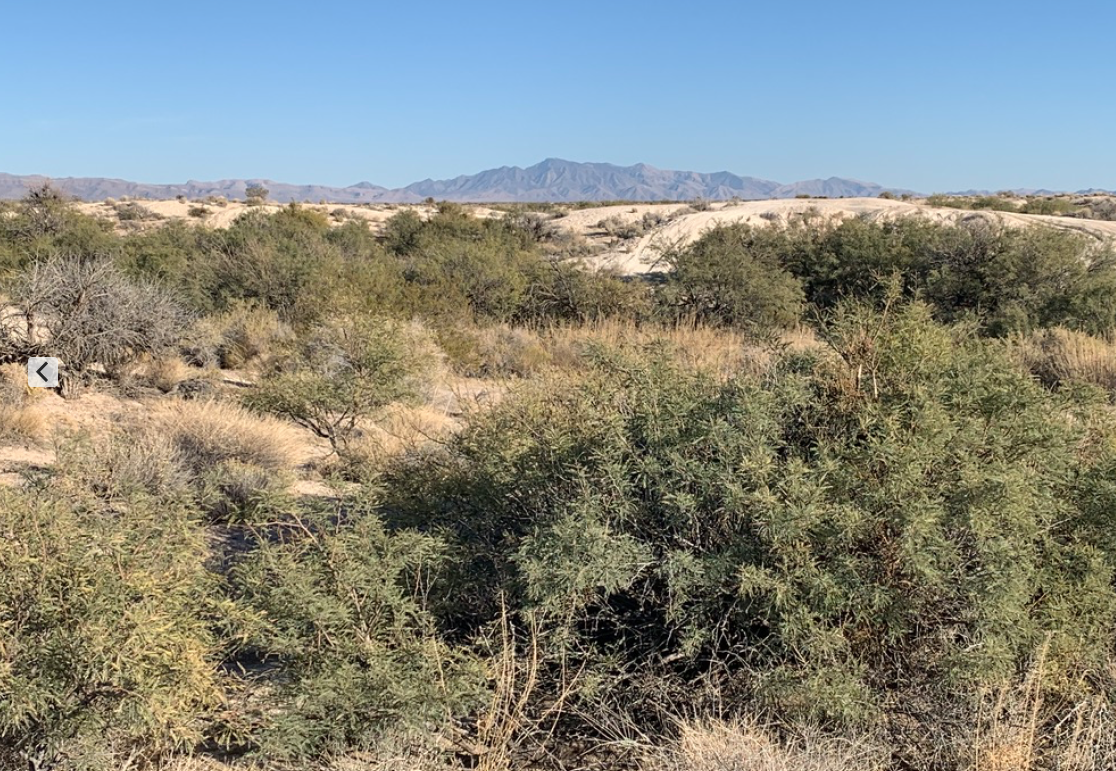
^Mesquite and badlands on the proposed Rough Hat Solar Project site just south of Pahrump. This area has a lot of honey mequite, and we cannot see how the solar project can avoid all these mesquite groves.
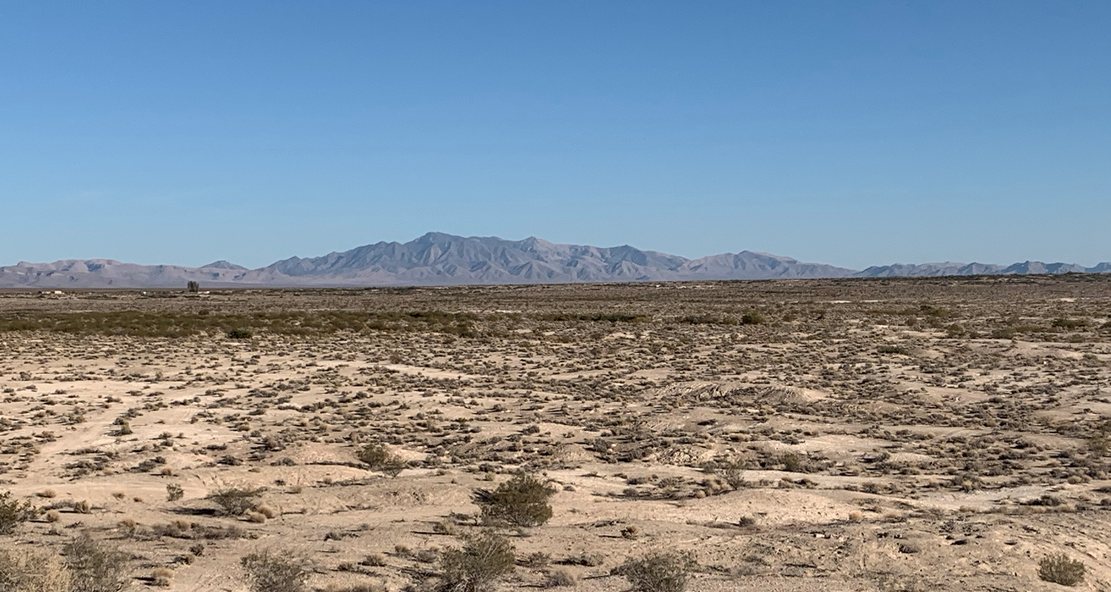
^View looking southeast from the Butte, across the proposed Rough Hat Solar Project south of Pahrump, Nevada. The ground is not flat, and is popularly used for public recreation.
Spanish Company Funded by Spanish Multinational Natural gas Company
Representatives of Candela Renewables (https://www.candelarenewables.com) were present to answer questions by the committee. The San Francisco-based developer has major funding support from its partner company Naturgy Energy Group (see https://www.candelarenewables.com/news-blog/naturgy-strategic-plan).
Naturgy (Naturgy Energy Group S.A., formerly Gas Natural Fenosa), is a Spanish multinational natural gas and electrical energy utilities company, which operates primarily in Spain. The company's administrative headquarters are in Barcelona, while its legal headquarters are in Madrid (https://www.naturgy.com/en/about_us/the_energy/gas).
The developers of Rough Hat Nye and Rough Hat Clark (named for a local mine), told the committee that they were coming to the community early, before the environmental review process started formally with the Bureau of Land Management.
Residents complained that the solar development was too close to Hafen Elementary School and houses, so the project developers said they would have a setback. They espoused how Nye County would recieve tax benefits from the project. Although we would like to know if only the operations and maintenance buildings are included in the tax base, and not the vast solar field--which has been the case in past solar projects.
The project developers were actively seeking a Power Purchase Agreement, and some offtakers could be California, they said, or Amazon or other tech companies in Sparks, NV. They were in a phase 2 interconnection study with the California Independant System Operator. No clear answer was given about whether any of the power would go to Pahrump.
The Bureau of Land Management has this project in a high priority status.
The company admitted traffic would be significant, with dust. They would use water trucks to mitigate dust during construction.
The small experimental Pahrump Valley Solar Project, on the northeast side of town, was said to be the model Candela intended to use for Rough Hat: Mojave Desert vegetation would be mowed down to 1-3 feet, and holes in the chainlink fence would allow tortoises to re-enter the project during operation. Sheep grazing was also explored as a way to keep vegetation down. We noted during our comments that Mojave yuccas do not grow back when mowed down, commonly using heavy-duty mulcher machines.
The solar developers admmitted they recognized there are significant trails on the site, and wanted to allow access. The mapped polygon is the maximum footprint, they explained, not the actual solar panel placement within any future Right-of-Way.
^Pahrump Valley Solar Project in operation.
The committee asked why did the developer pick this area?
Candela answered that the Trout Canyon Substation is nearby and has adequate transmission. Transmission farther than about 8-10 miles away from the solar project would be too expensive.
Water use was not well addressed except to say that during operation the solar panels might be washed once a year.
During operation the solar plant would employ a staff of 8 people.
The solar technology would be single-axis tracker, and no decision had been made yet on whether polysilicon solar panels would be used, or Cadmium-Telluride thin-film panels.
Would the project get a government subsidy? The project developer said that an Investment Tax Credit would be obtained.
Was there community outreach? Candela reps said they spoke with 27 residents, organizations, and clubs. The results were that some were indifferent, some positive, and some landowners were concerned. Many public commenters at the meeting said they were not consulted, and barely knew about this meeting until recently.
A representative from Battle Born Patriots piped up in public comments to say she was sick to her stomach that a company coming from San Francisco would ruin their rural playground.
Committee Wrestles With Solar Projects and Public Lands Access
The Public Lands Advisory Committee just seemed to be wrapping their heads around the proposals for "solar projects on top of solar projects" on recreational routes, such as on the proposed southern trailhead, which had grant funding to improve the trailhead for recreational trails leading south into the desert. The trailhead had funding, yet the proposed Cooper rays and Rough Hat Solar Projects would block the trails. This agenda item was tabled and removed from the agenda until the solar project situation and conflicts with recreation were figured out. The committee said they needed to figure out whether they would even have trails.
Again, plans for the the Old Spanish Trail were stymied as the committee recognized that the Rough Hat Solar Project would be built on top of a variant of the historic trail. A corridor for the Old Sopanish Trail needed to be protected. This needed to be open for recreation, as it is a growing atrraction in the region. Plans for events with OHVs, horse riders, were in the works, and working cooperatively with Clark County for a trailhead. The Public Lands Advisory Committee described how future events could imitate the popular Pony Express Trail horse ride, and a similar Old Spanish Trail ride would be a great event for horseback riders locally.
The solar applicants will still need to get a Special Use Permit from the Nye County board.
You can write the Advisory Board here: mblodgett@pahrumpnv.org, rapahrump@gmail.com, dlstrickland@co.nye.nv.us.
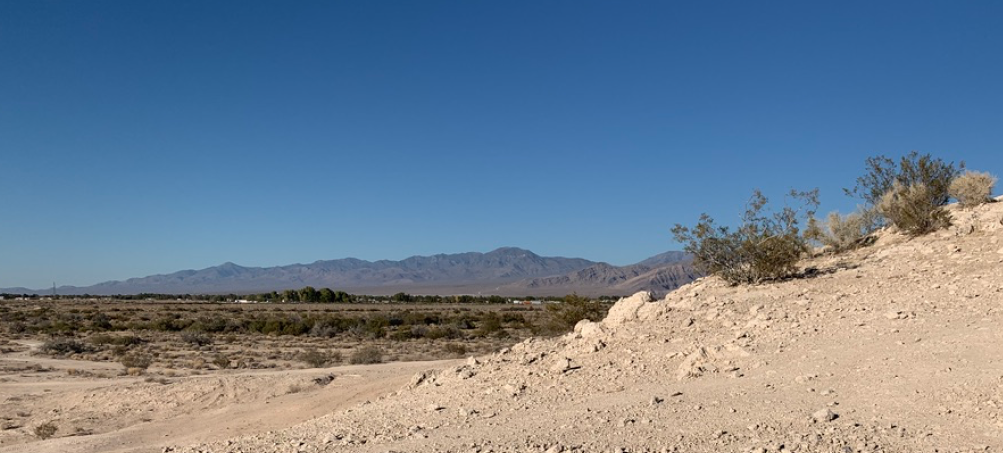
^The Rough Hat Solar Project would fill this desert between houses, neighborhoods, and block recreational trails. View from the Butte.
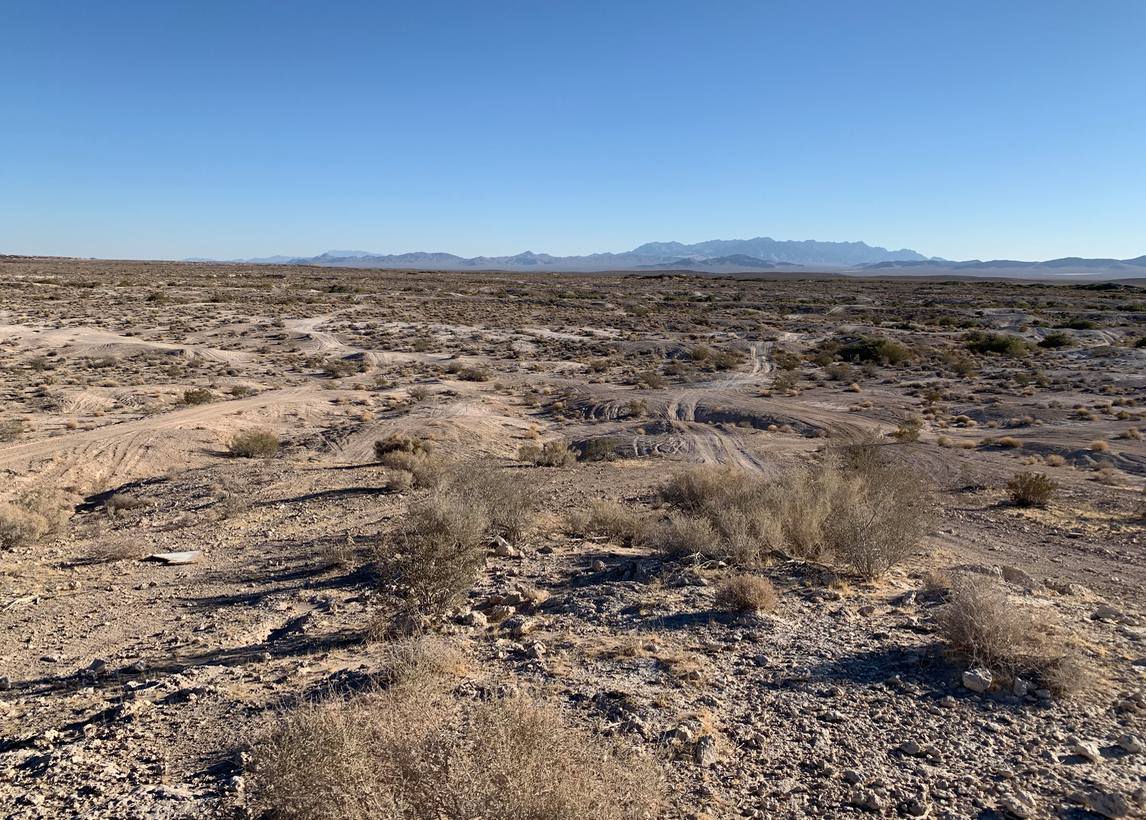
^Recreational trails that would be destroyed by the proposed Rough Hat Nye Solar Project. View from the Butte, just south of Pahrump.
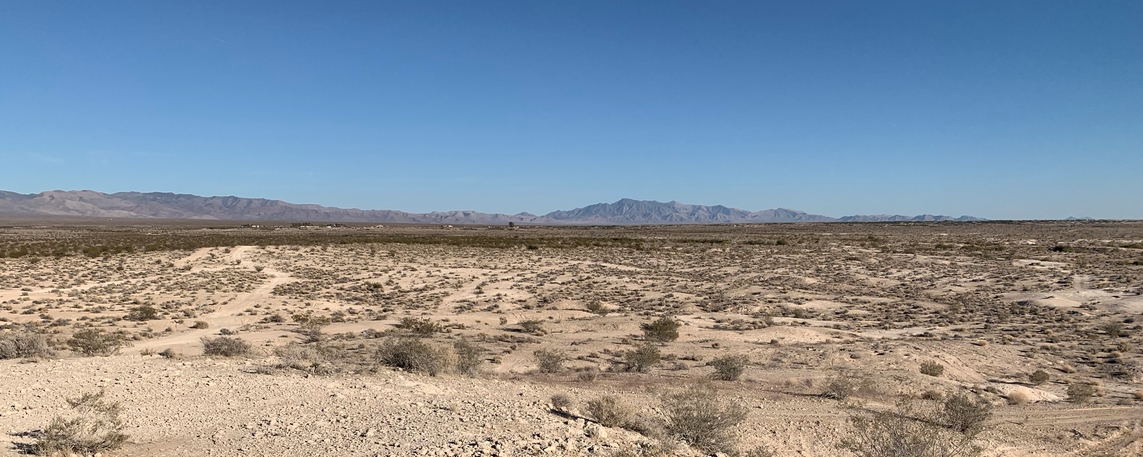
^Public lands with recreational trails and interpsersed neighborhoods, south of Pahrump on the area of the Rough Hat Solar Project proposal. Seen from the top of the Butte, looking eastwards towards the Spring range and highway 160.
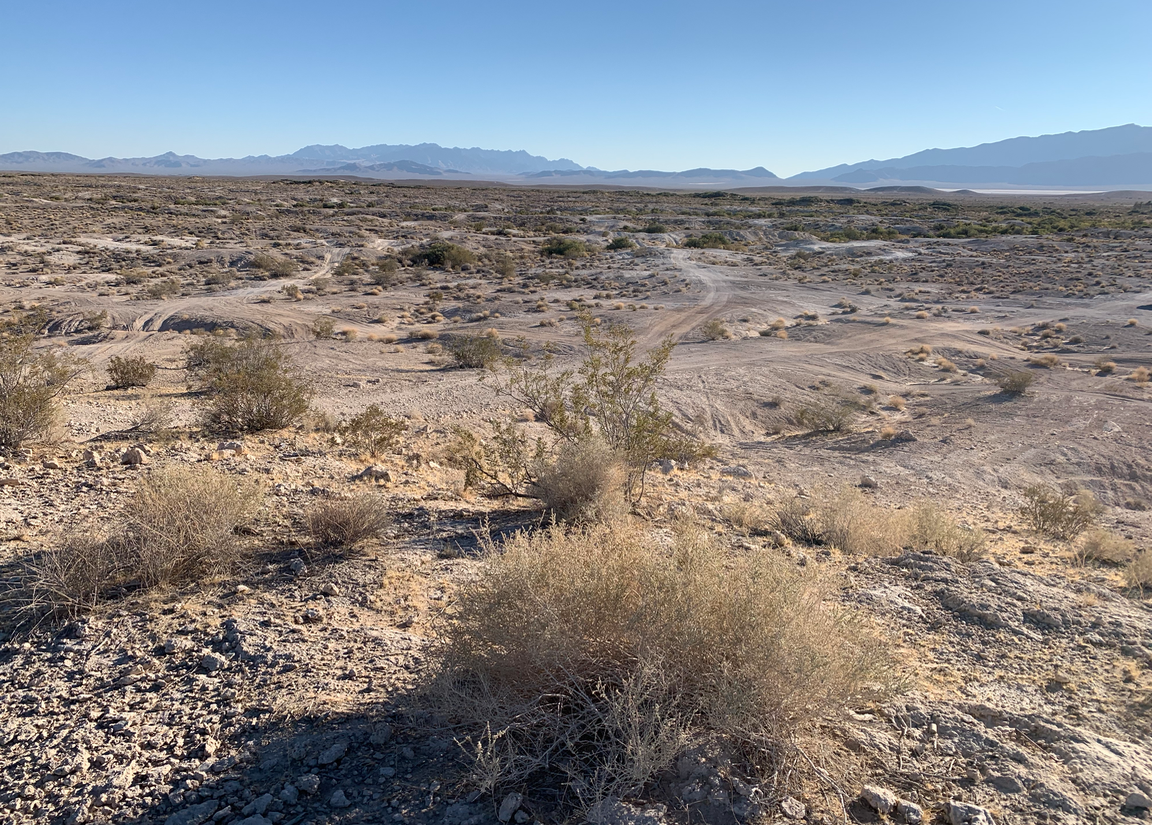
^Open desert, recreational trails, on the site of several proposed large-scale solar projects, looking south towards the Nopah Range and Kingston Range (in California), from the top of the Butte on the southern edge of Pahrump.
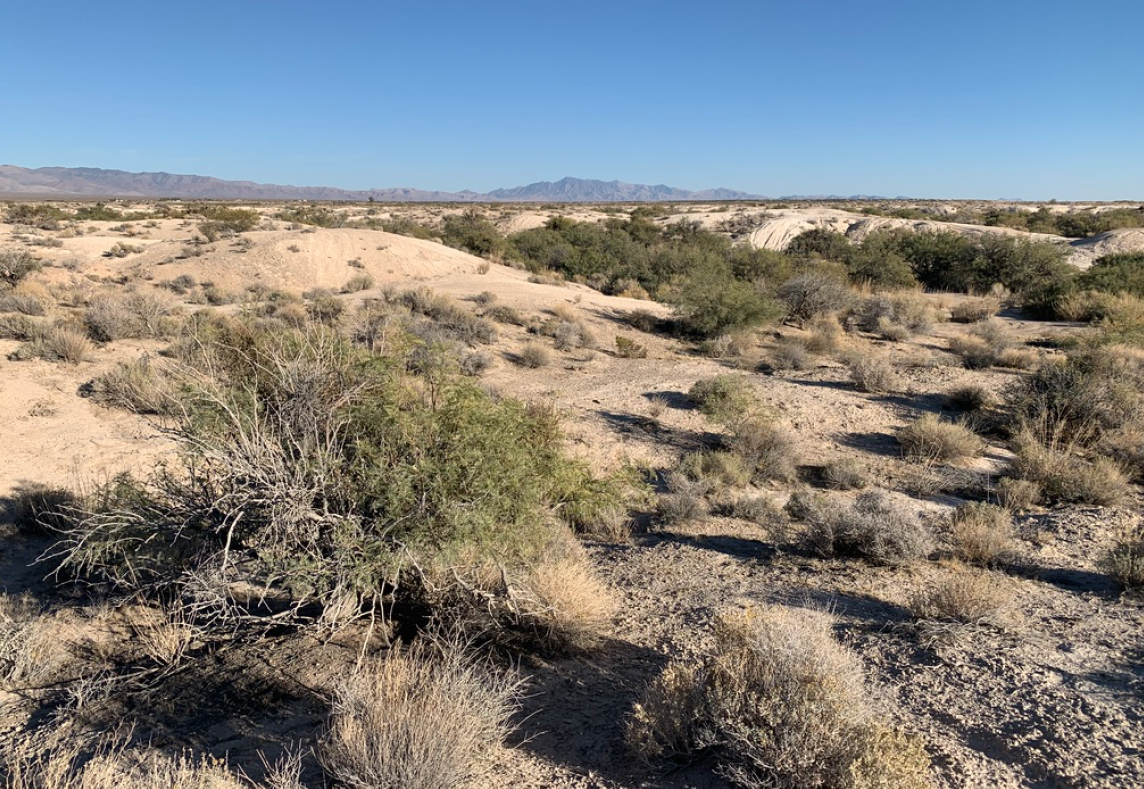
^Mesquite baldands and ravines on the site of the proposed Rough Hat Solar Project.
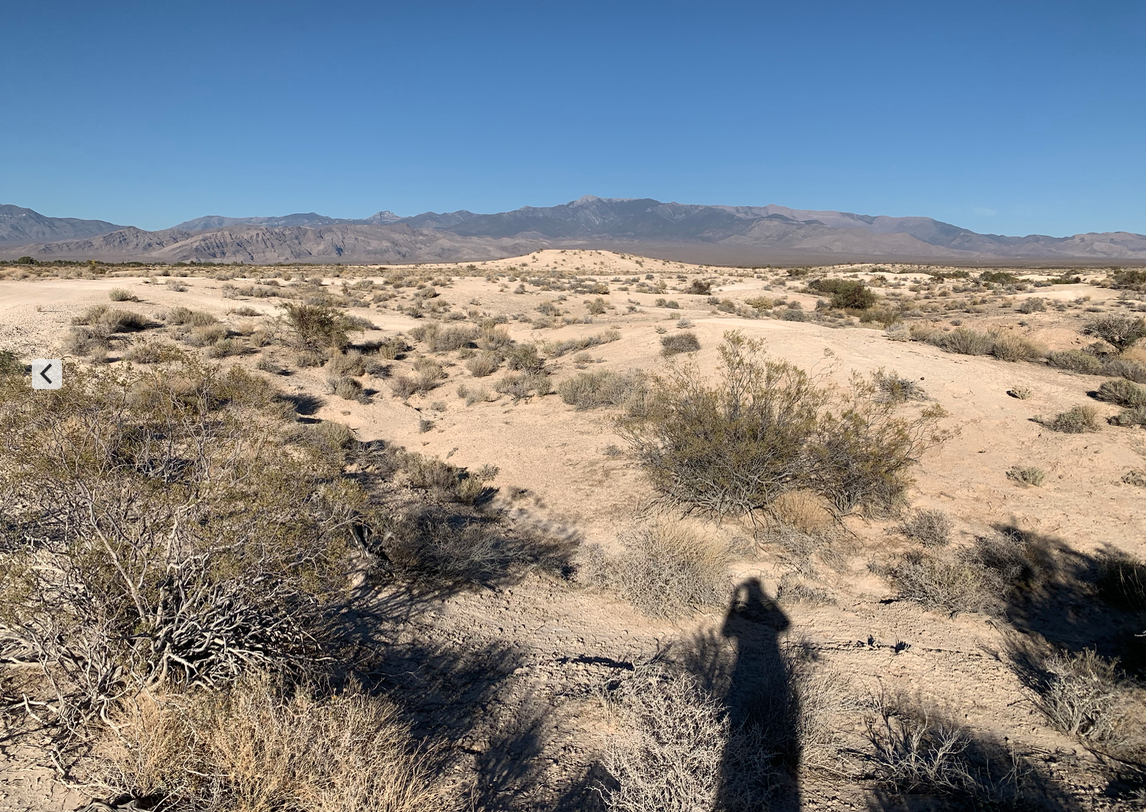
^Beautiful desert landscape and the Butte just on the south edge of Pahrump. Site of the proposed Rough Hat Nye Solar Project.
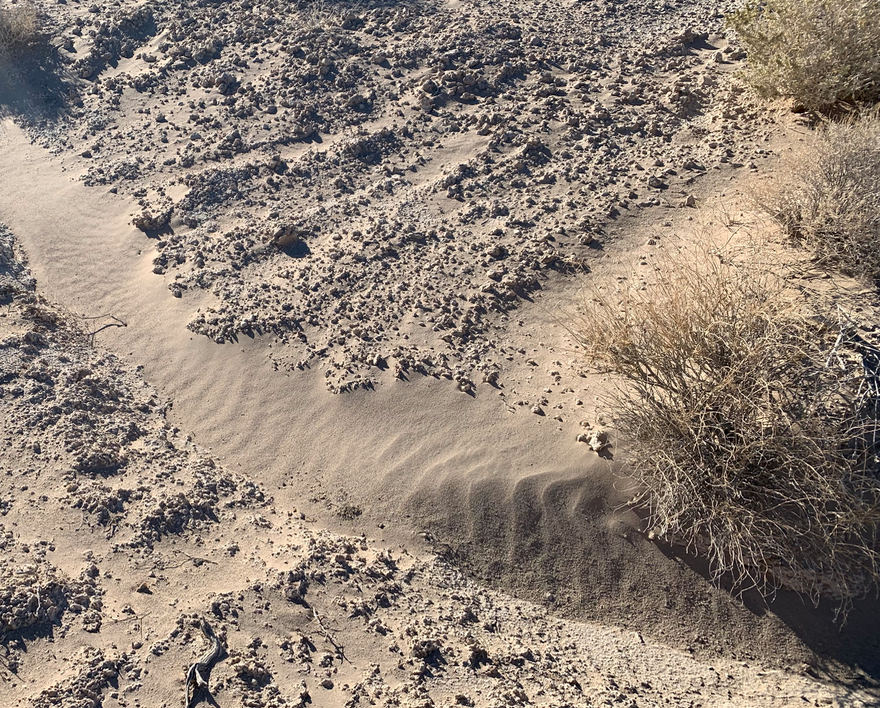
^Sandy flows on the site of the proposed Rough Hat Solar Project.
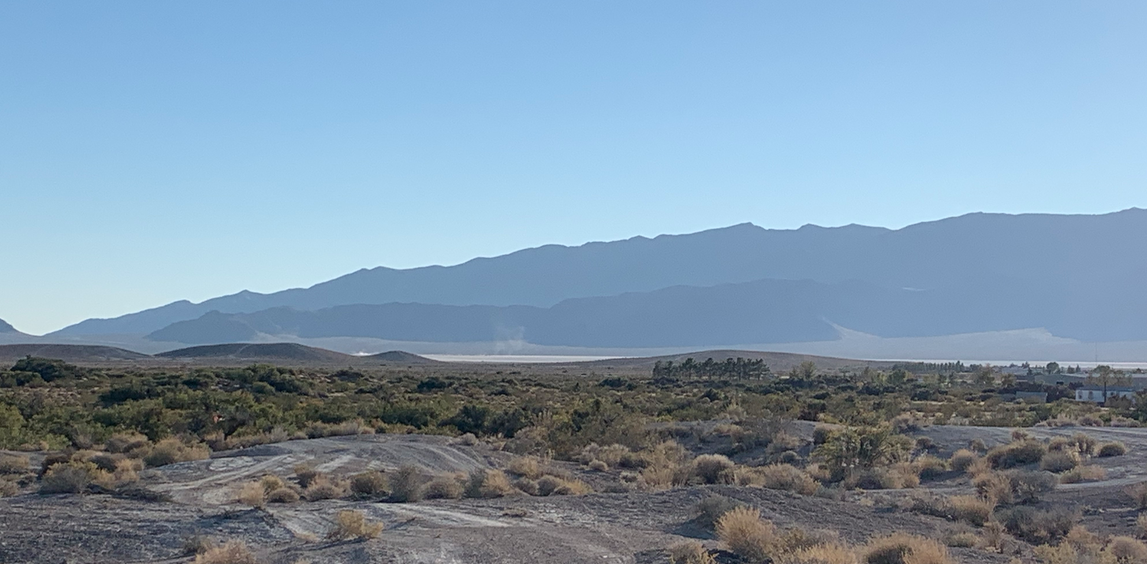
^View looking towards the playa in southern Pahrump Valley, and the Nopah Range.
Recent articles and information:
An agenda for this meeting can be found online at www.pahrumpnv.org by clicking on the “Advisory Committees” link.
https://pvtimes.com/news/a-new-solar-project-is-proposed-for-nye-county-92979/
HOME.....Yellow Pine Solar Project.....Pahrump Valley Solar Project.....Copper Rays Solar Project.....Golden Currant Solar Project

